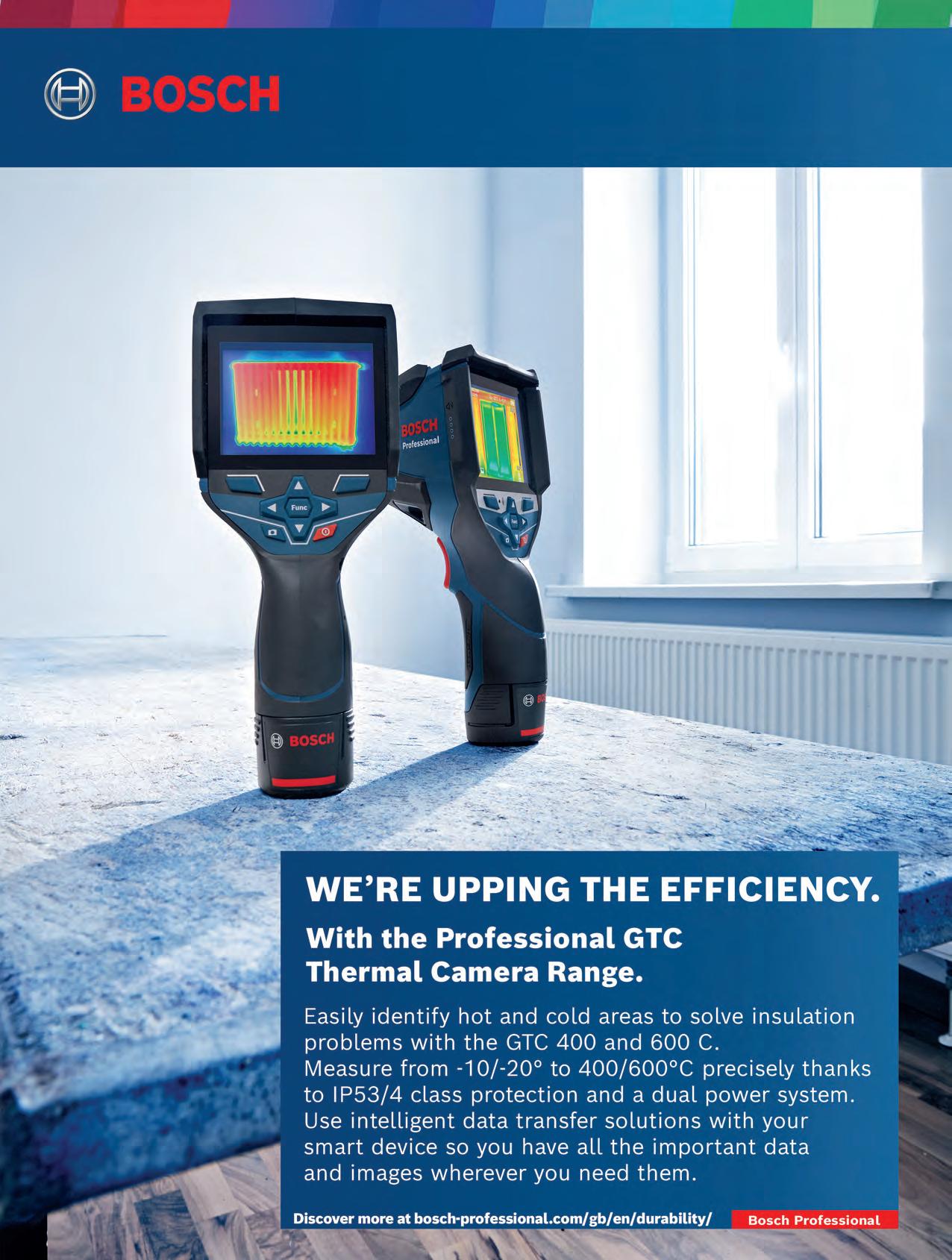

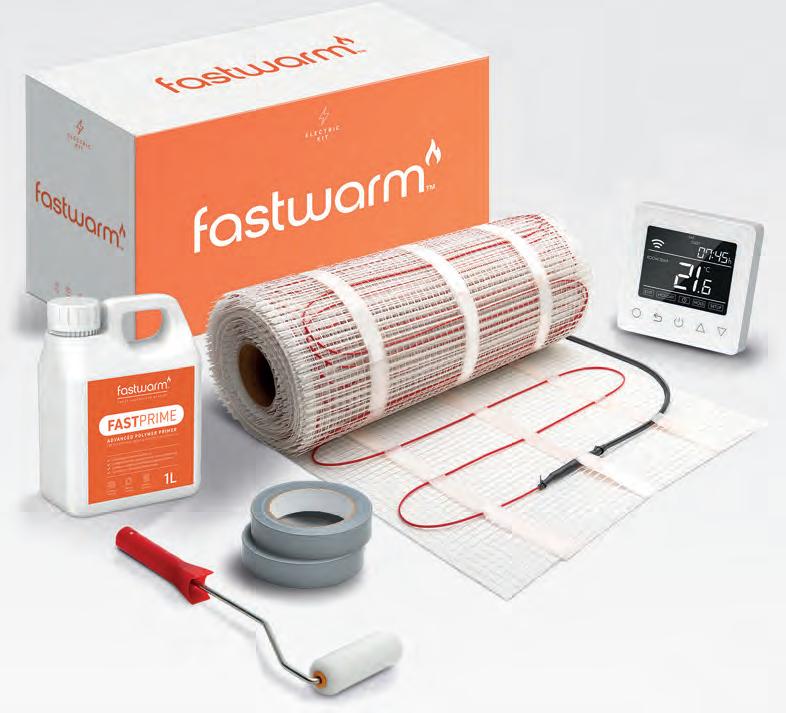

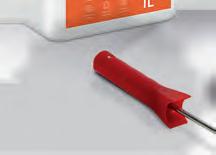

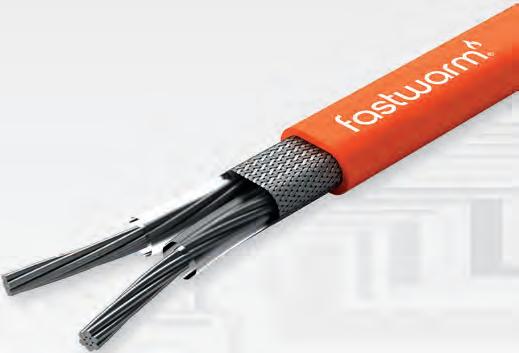








Logistics -receiving, storing and delivering goods and components -is big business, and it's getting bigger. The number of business premises used for transport, logistics and warehousing in the UK has almost doubled in the last decade, according to the Office for National Statistics.
Eco-1 Electrical Solutions is helping that growth, carrying out 13 installations for warehouses in >-< Northampton and Borehamwood. It's also responsible for the electrical o works of Apex Park (pictured), a huge u, 435,000-sq-ft warehouse in Daventry for logistics firm Prologis. Eco-1 t, installed 640 warehouse lights inside, S:: and 4,447 PV panels on the roof.


The Walsall firm completed a full electrical engineering service, including fire alarm, lightning protection, internal and external lighting, installation of EV chargers, wiring of external services to petrol interceptors, door access and CCTV containment. The team also designed, supplied, installed, tested and commissioned the emergency lighting system.
Eco-1 is particularly proud of implementing the BIM model at the design stage. This improved efficiency and enabled the client to not only see where the electrical equipment and parts would be placed, but also gives them a virtual manual.
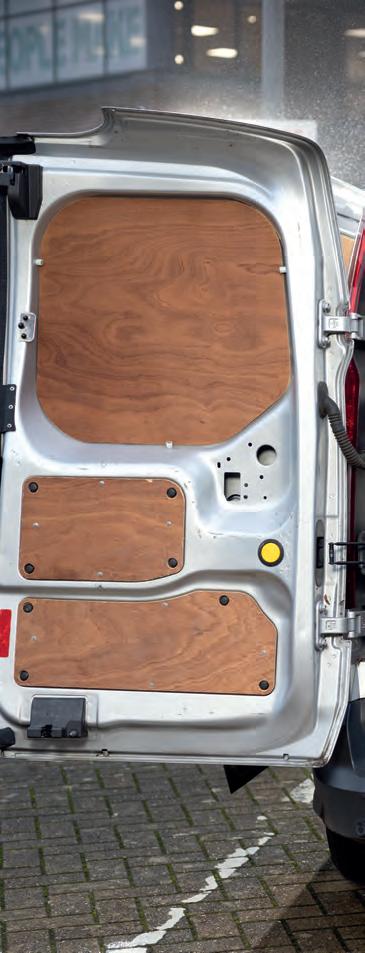


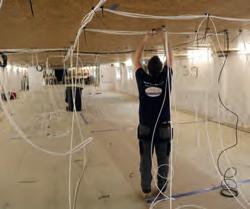
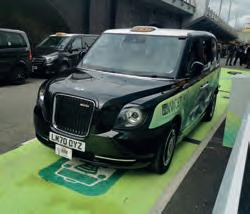

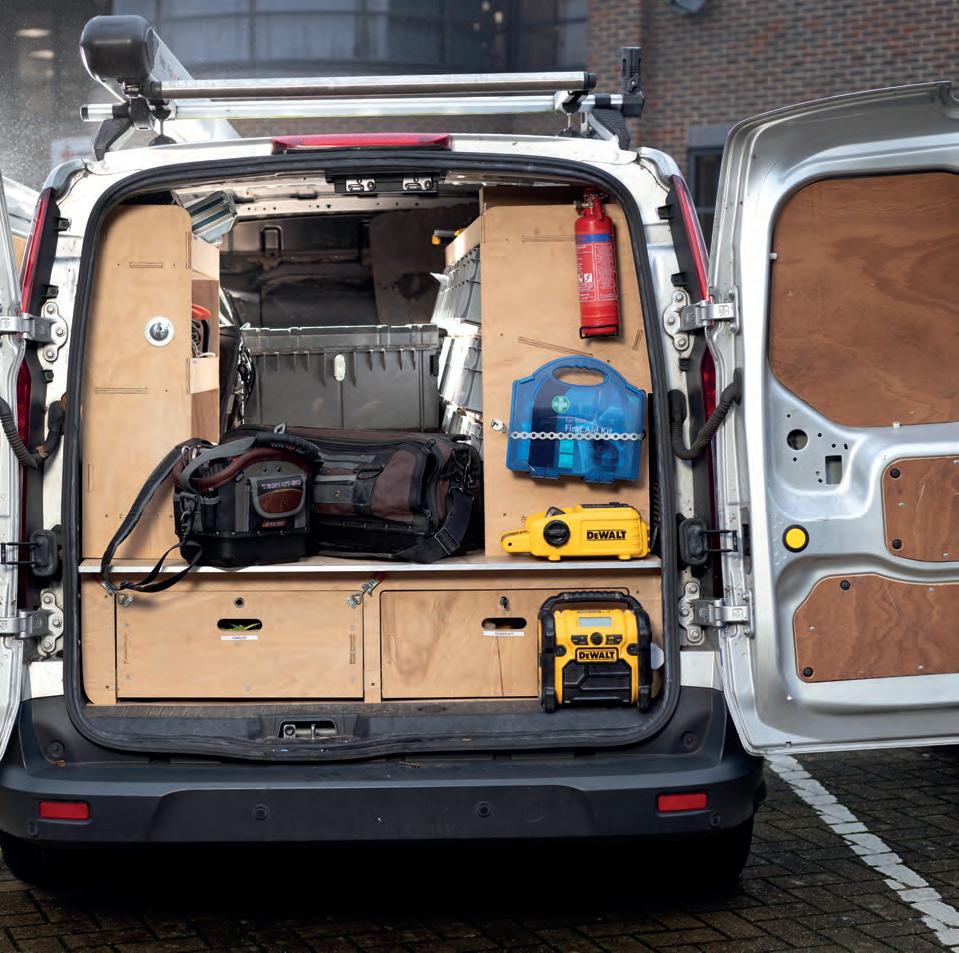



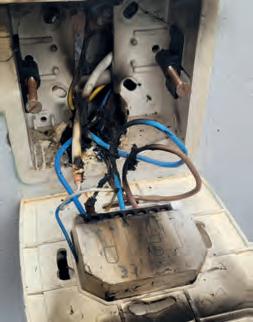






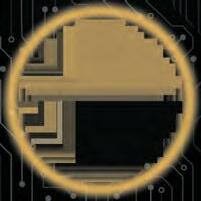
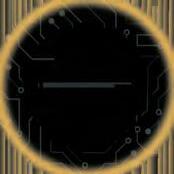








































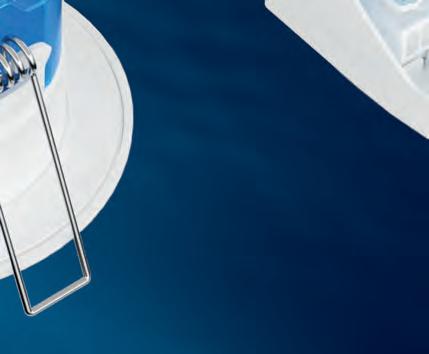


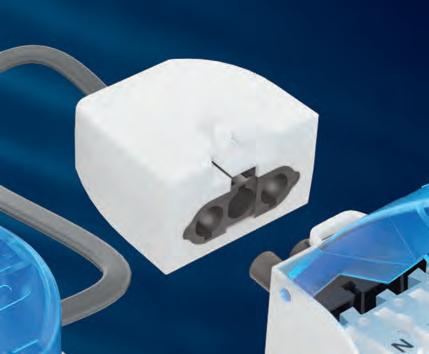






































©2023
ISSN 2042-5732 www.niceic.com •
Enquiries 01582 539000
Communications executive: Debbie Shields debbie.shields@certsure.com
Customer services: 0333 015 6625 Sales: 0333 015 6626 Training: 0333 015 6627
Technical helpline: 0333 015 6628 Insurance: 0333 015 6629 » @offi.cialNICEIC
Published on behalf of Certsure by: Think Media Group, 20 Mortimer Street, London, WlT 3JW
Editor: Clare Dowdy clare.dowdy@thinkpublishing.co.uk

Group managing editor: Sian Campbell Art director: Grant Pearce Client engagement director: Anna Vassallo
Content development director: Matthew Rock Executive director: Jackie Scully
Advertising: Leanne Rowley leanne.rowley@thinkpublishing.co.uk
Connections welcomes ideas for contributions. Please email connections@thinkpublishing.co.uk
...
Welcome to your first Connections magazine of 2023. I hope you and your families had a wonderful Christmas period and that you are fully recharged for the year ahead.
This welcome is a little different for me from others I've written over the years, as it will be my last. After a wonderful 51-year career in the industry and a fantastic 13 years with NICEIC, I'm retiring in March. A bittersweet decision for me, but one I take in the knowledge that I am handing on the baton to the safest of hands.
Coming back to business now, and I appreciate it's a little late for Christmas puns, but this issue is a cracker. On page 31, we cover the latest news and legislative changes, including updates to Best
Practice Guide 4 and new rules relating to mandatory electrical safety checks in Wales. These pages are a must if your business engages in Periodic Inspection and Testing.
Moving on to electric vehicle charging installations, we know requests for this type of work are increasing rapidly. The nature of these installs is also changing as government funding is redirected from homeowners with driveways to owner-occupied flats and social housing providers. Of course, these settings present new challenges, and on pages 12 and 24, we look at the technology that can help.
All rights reserved. This publication (and any part thereof) may not be reproduced, transmitted or stored in any format without the prior written permission of the publisher. Think Publishing Ltd accepts no liability for the accuracy of the contents or any opinions expressed herein.
Printed by Acorn Web Offset, West Yorkshire. Connections and its paper wrapper are printed on paper from European mills, meeting the highest quality and environmental standards. Both the magazine and the paper wrapper are fully recyclable.
Finally, I'd like to give a special nod to our crown jewels: our highly regarded Technical Section. Authored by our in-house experts, these articles are extensively researched and carefully crafted. The team take great pride in ensuring they not only deliver sound guidance but also cover the topics you need. CPD certified, these articles are valuable tools, and engaging with them counts towards the EAS requirements. So please make sure you share them with your teams and that they're logged on everyone's personal CPD record. That's it from me. Thank you all for your commitment to NICEIC and its principles. I wish you all the best and I look forward to seeing how you drive our wonderful industry forward in the years to come.
John O'Neill Director of technical excellence, Certsure
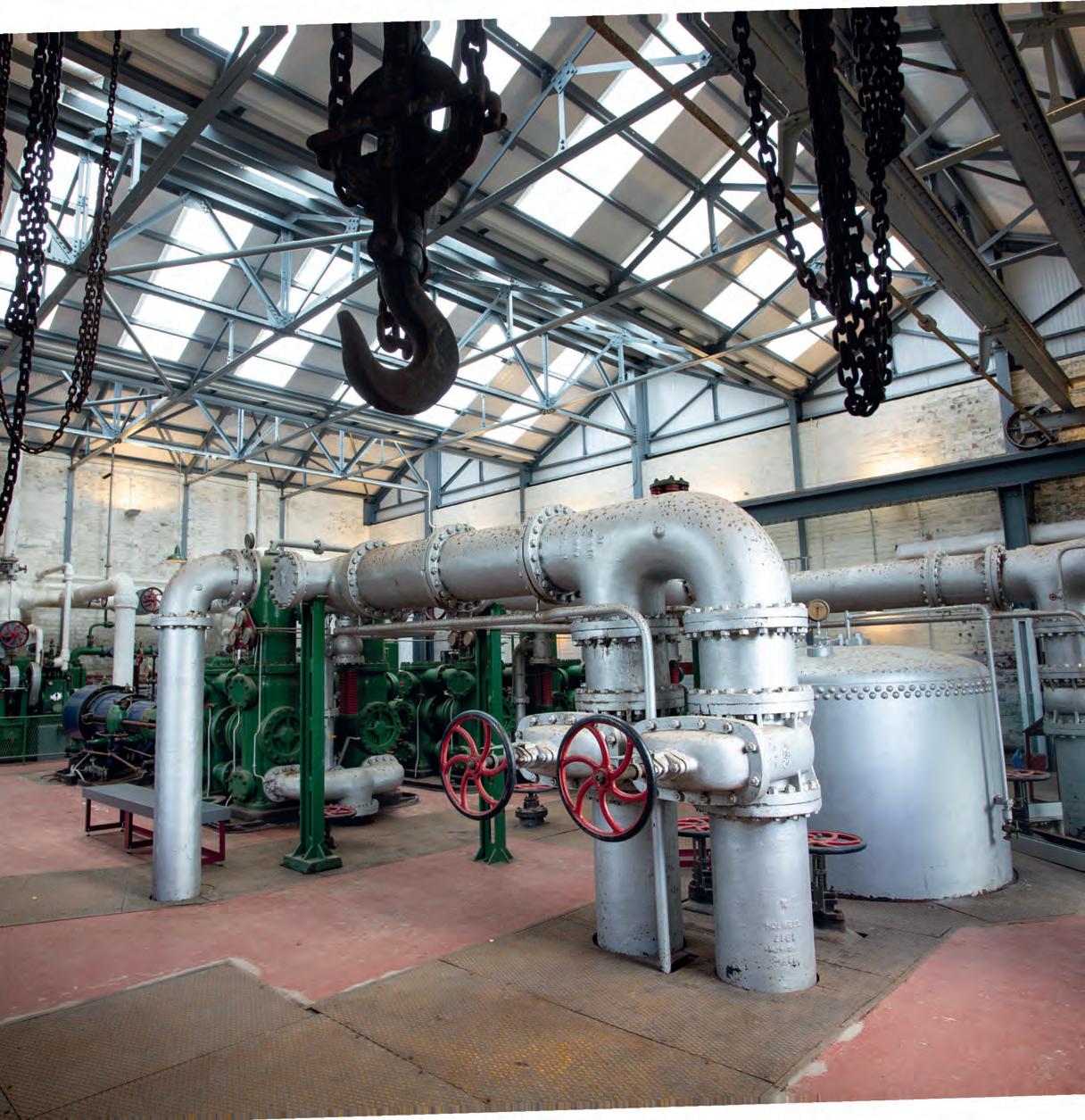
















 JOHNNICHOLLS,SEE
JOHNNICHOLLS,SEE
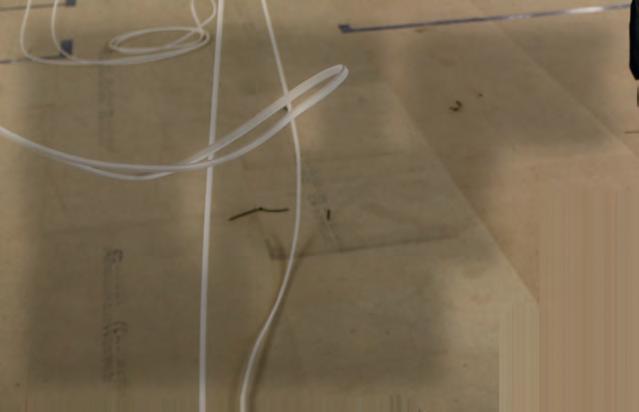


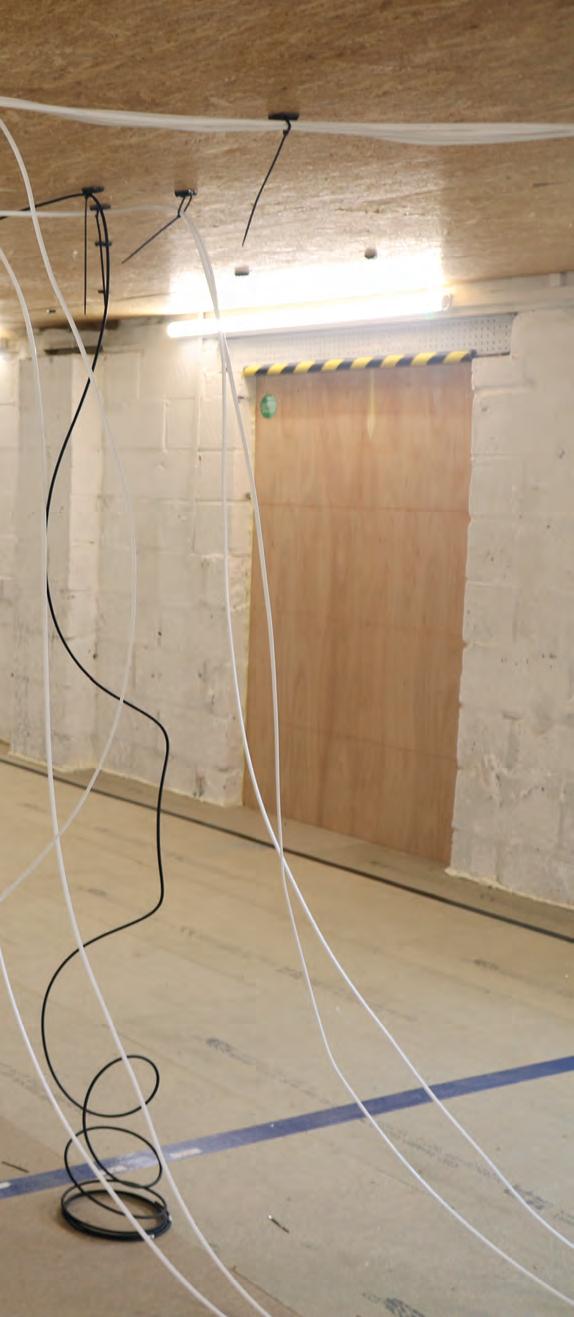

"Weoverlaythe
In a former piggery near Gravesend, duct tape is stuck to the floor, and long cables are draped in elaborate patterns from the timber ceiling.
This is where Kent contractor South East Electrical (SEE) Installations can halve the time it takes them to wire a new apartment, reducing the risk of accidents to boot. The cables are ingenious 'wiring looms'. It works like this: apartment rooms are set out using duct tape laid out on the raised floor, and electrical accessories are placed along the taped lines.
"We overlay the mechanical services -pipe and duct -on to the drawing before printing, to eliminate any clashes," says SE E's managing director, John Nicholls.
Following the drawing, cable fixings are attached to the ceiling and cables are run along the correct routes into different rooms. SEE raised the floor within the piggery so that operatives can get to it without needing access equipmentanother safety improvement.
Once the whole apartment's wiring is in place, the loom is taken down from the ceiling and laid on the floor. Velcro bands keep the loom tidy while it's wound on to the cable drum. This is done by a footpedal-operated cable drum machine.
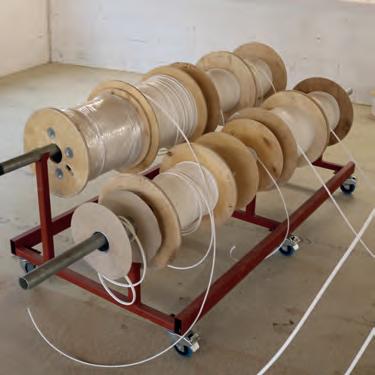
To keep the looms secure during transit, they're wrapped in recyclable plastic. Before being taken to site, each loom has an installation guide attached, and both are colour coded to help with the installation.
SEE, which includes Balfour Beatty and Westfield among its house builder clients, can wire four apartments at once in its pre-fab centre. This is traditional wiring, says Nicholls, but not as we know it: by taking the electrical element out of the traditional M&E programme works sequence, SEE has joined the off-site manufacturing movement.
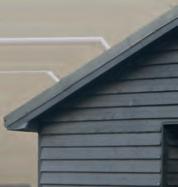
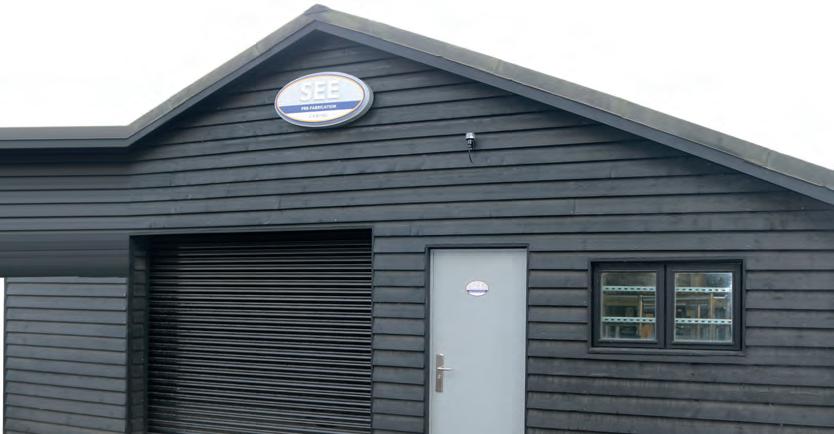
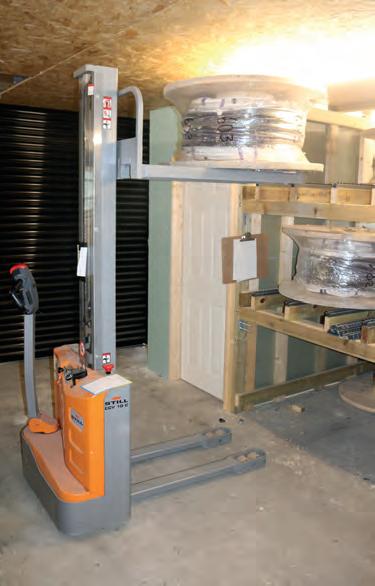


R O Electrical helps set up wireless charging points for Nottingham's taxis
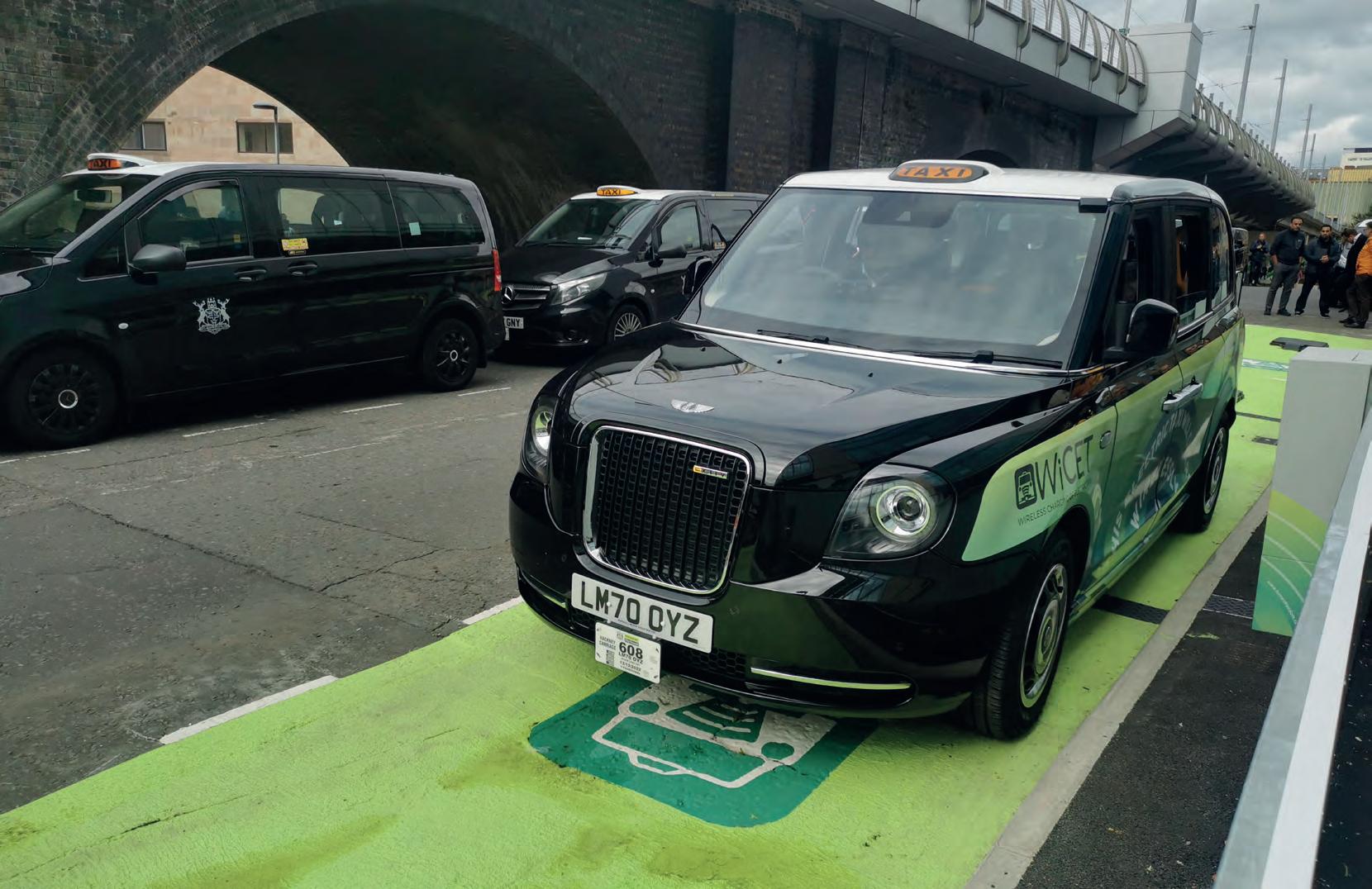
If you want to see what grazing taxis look like, then head to Nottingham's Trent Street. In the first trial of this size in the UK, five wireless ground transmitter pad systems have been installed at the main taxi rank near the train station, and nine electric hackney carriages have been retrofitted with wireless receiver pads just in front of their rear wheels.
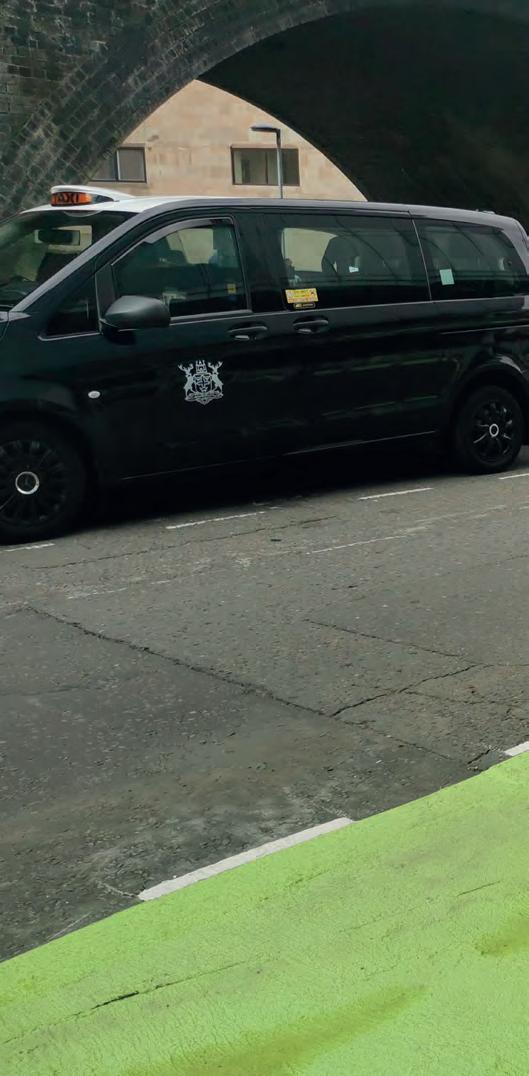
Sean Roe ofR O Electrical took on the electrical design for the site, from the metering cabinet to the local distribution cabinet and individual circuits out to the charger ground pads. The Mansfield firm came across a couple of bespoke issues which they now know are commonplace for EV charging equipment installed on the public highway: powered street furniture.
"We had a TT earthing system for the charging equipment as per our manufacturer's guidance," says Roe. "Local to where the chargers were being
installed were two additional items of powered street furniture off a PME connection." Simultaneous contact assessment of these showed a risk of touch voltages being present in the event of a broken combined neutral and earth conductor (PEN fault).
A public transport ticket payment machine was moved to the back of the footway. However, a 10m lighting column couldn't be relocated because of its in-ground services and limited available excavation depth. Instead, RO Electrical had to clad it with insulation sleeves.
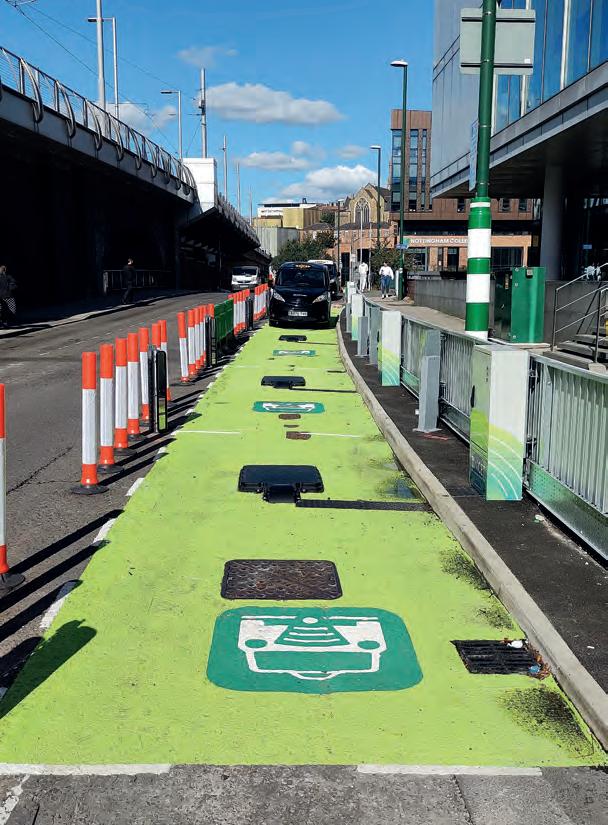
The set-up and calibration of the charger units was done by Lumen Freedom, which supplied the wireless charging hardware.
To charge their taxi, the cabbie, using the guidance of a screen in the cab, aligns the taxi over the pad so that it charges while stationary. As the taxis move forward in the rank, the driver realigns with the next pad and charging recommences. Drivers are billed for their total charge at the end of each session through an app on their phone.
The taxis charge at 10 kW, says Richard Sander, project manager of
Wireless Charging of Electric Taxis (WiCET) and technical specialist at Cenex, which led the trial. "The concept is little and often," he adds.
This could be just the beginning for wireless charging in the UK. "There are also trials in other countries looking at charging for taxis and buses," says Sander. "There's a wide range of potential applications for the technology, including emergency vehicles, accessibility solutions and on-street parking."

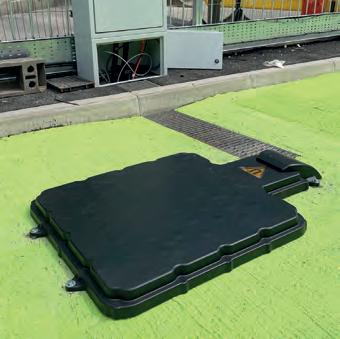
See This will be Big on page 24 for more clever charging ideas.


Withforecastspredictinganincomingeconomic storm,businessesmustcontinuetofundtheir trainingregimesifthey'retoemergeshipshape
The Bank of England has suggested the UK is facing its longest recession since records began -up to two years in the fiscal doldrums.
Efforts to tighten the purse strings and make a business more financially robust clearly make sense. But short-term z cost-cutting on training could endanger a company's future viability as it starts to exit the recession, argues Lizzie Lyons, head of skills delivery at industry support body Business West.

cii "Now more than ever, firms should § be focusing on the development of their workforce," she says. "Ensuring their
staff have the skills needed both now and in the future will see those businesses remain productive throughout what will doubtless be a difficult time."
Advancements in technology, digitalisation across almost every sector and a focus on environmental sustainability mean that the skills needed by a company's workforce are evolving and will continue to do so regardless of any economic downturn. Recruiting new staff
Ourtrainingpackagesand coursescanIleprovidedina rangeofdeliveryoptionstosuit companiesorindividuals.
Ifthepandemictaught usanything,itisthatonline learningcanIlejustaseffective asanytraditionalface-tofacemethods.
That'swhytheteamat NICEICofferarangeoftraining coursesthataredeliverable acrossallmethods-self-paced e-learning,remote'virtual classroom'andface-to-face-or evenabespokemixtureofall.
"Thewayweoffer trainingcourseshaschanged immeasurably.Wecantailorour deliverytosuitmostpeople," saysNICEIC'sNikMitchell.
members to cover that evolution could be prohibitively expensive -training existing ones less so.
"Developing staff often requires investment but it doesn't compare to the huge cost ofrecruitment or the cost ofloss of business because ofa lack of skills. Not all training is costly. There are plenty of initiatives that businesses can look at to develop the skills they need," adds Lyons.
It is a point echoed by NICEIC's technical training manager, Nik Mitchell. He stresses the importance ofretaining a fully qualified, committed workforce and how by tailoring training delivery, business can cut out some of the expense.
"The way NICEIC delivers training packages has completely changed since the pandemic," he says. "Pre-Covid all anyone wanted was face-to-face learning. Now trust in our online offering has developed. Businesses immediately save on expensive hotels and travel but we can
Call us on 0333 015 6626 to discuss your training needs or visit www.shop.niceic.com/training

NICEICtrainingcoursesareconstantlybeingupdatedandintroduced ta keepuptadateinarapidlyevolvingsector. Renewableenergysystemsisoneareathathasseenamassive spikeininterestaverrecentmonthsandtheNICEICteamisresponding tathatwiththeintroductionofanElectricalEnergyStorageSystems [EESSJcourseinJanuary-andacertifiedandrecognisedqualification inEESStafallow.
NIKMITCHELL,NICEICprovide training packages combining a mixture of methods to suit everyone."
By using its experience, NICEIC can help customers develop training regimes that offer tangible benefit at minimal disruption to businesses.
"It may not be convenient for a firm to send all its staff off to a training session in one part of the country. There will be certain safety critical aspects that need to be carried out face-to-face. But within certain confines we are flexible enough to work with the customer to provide a product that suits the way they work," says Mitchell.

Such is the pace of change in the electrotechnical sector that courses are being added constantly and amended on the back of demand from customers.
The energy crisis has seen a spike in interest in the installation ofrenewable energy systems as well as methods of harnessing the power when generated. NICEIC has been quick to respond to that demand from customers.
"At the moment, there is particular interest in everything related to renewable energy. That interest is driven by consumers wanting to control their own energy as much as possible.
Introducing the EESS CPD course (see above) responds to those demands. The sector is incredibly fast-paced, and we have to react to that by offering training that caters for that speed of revolution," he says.
Emerging on the other side of any recession fighting fit and ready to push forward will depend on the retention and development of a workforce motivated to do just that. Training is vital in ensuring that.
Lyons admits that businesses are facing a challenging time. "But that will be even more difficult if they are left with a workforce that is under-skilled and under-prepared for the challenges and opportunities that lie ahead. Workforce development planning is essential to keep on top of the game," she adds.
"Atthemoment,there isparticularinterestin renewableenergy"
We're entering the "longest ever recession", according to the Bank of England. So the prudent certified business may be thinking of imposing their own austerity measures.
Skip those trips to Starbucks. Patch the old work wear rather than splash out on new togs. And examine every cost to see what can be pruned.
However, some corners can't be cut. Knowing how to spot false economies will be the key to success in troubled times.
It's important to maintain standards in procurement.

Switching from certified products to illicit market knock-offs is a terrible idea. "There is a growing prevalence of counterfeit and substandard electrical products," warns Martyn Allen, technical director at Electrical Safety First, the charity devoted to improving safety in the electrical industry. "There are reports of fake and substandard
plugs, fuses, circuit breakers and cables infiltrating the market, along with other basic electrical accessories we take for granted and use in a multitude of ways."
If the price is far lower than usual, and the vendor is not one of the reputable electrical wholesalers, then alarm bells should start ringing. "In the UK, the sale of non-compliant electrical installation products is considered a more significant issue than outright counterfeiting," says Allen. "Non-compliant products are not necessarily fake but they do not fulfil the essential safety requirements in product standards."
The cost difference between an independently approved cable and a non-approved one is usually not great. "It can be a marginal cost difference," says Jaya Skandamoorthy, regional technical manager at BASEC, the cable certification body. "But using poor quality cabling is prevalent. Electricians need to understand the risks. In addition to fire risk and failure, there's reputation too. Some clients such as Transport for London and the Ministry of Defence demand contractors use high-rated
JAVASKANDAMOOIHHV,BASECmaterials, such as Cea class of cable under the Construction Products Regulation classification for reaction to fire. If you are using inferior cables you simply won't get the work."
Allen advises vigilance, and asks for help in tracking down rogue suppliers: "If you suspect an item you have bought is fake or substandard then look for obvious marking errors and typos, or check with the brand owner. A number of websites offer useful information on product compliance."
He points to DoesltComply.com as a good place to start

"Usingpoorqualitycabling is prevalent.Electriciansneed tounderstandtherisks. Inadditiontofireriskand failure,there'sreputation"
£250,000 for professional indemnity (when certified for Periodic Inspection)," says Grant Barnfather, client executive at Marsh, the official insurance partner of the NICEIC. "You need those as standard." Then there will be a per job requirement. "You set parameters depending on the contract," he explains. "If you are working on a public shopping forecourt, you may need £5m public liability cover."
when checking the status of products. ESF is also running a campaign and petition against counterfeit goods, with a Google Chrome browser extension called 'Check it Out' to let buyers know whether manufacturers and retailers on Amazon or eBay are trustworthy.
Then there's accounting. A good accountant can cost a grand or two a year. Tempted to skip the advice and do it yourself? Or use a bookkeeper to fill out your tax return? It's a foolish move. An experienced accountant will pay for themselves and then some.
Tom Payne, the founder of Abaqus, a Gloucester-based practice with many tradespeople as clients, puts the case for his profession: "An accountant can help you decide on the legal structure of your company; trading as a limited company, a sole trader, or even a partnership."

He rattles off the extraordinary ways an accountant can slash a tax bill. "There are office costs, travel costs, clothing expenses, marketing, training, heating, lighting, and things you sell on.
Capital Allowances can reduce your tax bill significantly and some assets are even eligible to have their entire cost written off in a single year, which can make a massive dent in the amount of tax you'll need to pay!" There are quirks, such as a Trivial Benefit-a gift worth up to £50, and £300 in total a year -which the company can gift to each employee tax free.
Perhaps the killer argument is the time saved. "An accountant would be able to complete your taxes for you, likely charging a lower hourly rate than what your time is worth in real terms," says Payne. "They would inevitably take less time to do it too, again saving you money, and also freeing up your time to focus on making money."
Insurance is another area to consider. There are basic minimums you can't cut. "Every NICEIC-certified business must have, as part of their certification, £2m public liability insurance and
There are optional extras. These include personal accident and income protection, tools and plant cover, and financial loss cover. The last of these is a godsend if a job goes wrong. "Let's say you're fitting out a shop which has a grand opening day scheduled," says Barnfather. "They book customers in and arrange a huge launch party. If you haven't finished on time then they may pursue you for lost income. Financial loss cover would come into play."
He says certified businesses should "avoid at all costs" the temptation to reduce insurance cover. Instead, optimise spend. "We offer a free insurance audit for NICEIC-certified businesses," says Barnfather. "This includes education on the cover businesses need, and policies they may not have thought about." The relationship between Marsh and the NICEIC means certified businesses are entitled to a 10% discount. Another tip is to go with an insurer that allows policy amendments mid-contract with no extra fees. So in the event of a big contract win, policies can be expanded with no penalty costs.
Above all, he says, speak to a human. "Price comparison sites work on price, not on cover. Talk to a broker and they'll explain the pros and cons of each policy. That's how you get the right cover."
There's a mantra in Silicon Valley: don't cut costs, increase revenue. As we enter the dark maelstrom it may be tempting to go Full Truss and slash your outgoings, but to do so is to risk economic meltdown.
"[Anaccountant]wouldtake lesstimetodoyourtaxesfor yousavingyoumoney, andfreeingupyourtimeto focusonmakingmoney"
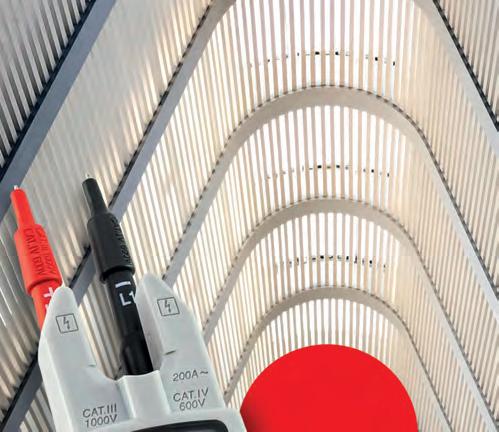


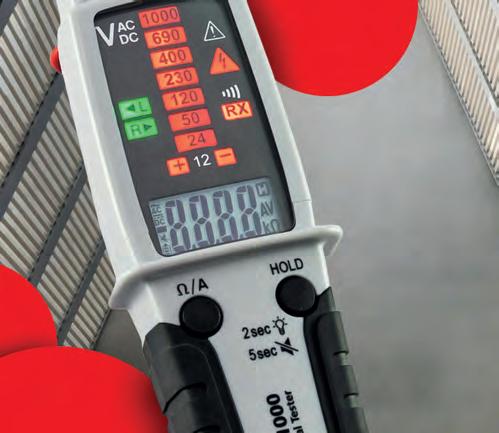


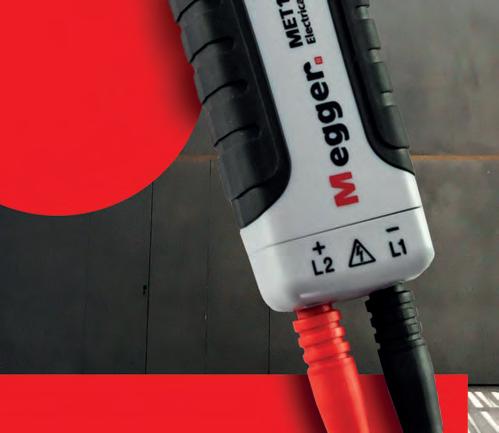

























Mark Thurston of Flagship Services says: "I've been a QS for 28 years, and think this is one of the most dangerous installs of a cooker I've ever seen." Norwich-based Flagship Services safely isolated the circuit, then installed a new cooker outlet and did the required testing. Thurston's electrician then issued a minor works certificate, instructed the tenant that he was unable to connect the cooker, and left a safety notice with them.
Michael Slatcher ofMtek Solutions in Aldershot, Surrey, attended a site to install a security system, and spotted a towel hanging up with a danger sign on it. "There was another contractor there and he went to lean up against the towel," he says. "I quickly pulled him away and looked behind the towel to find a fully live consumer unit with no cover." The covers, which had been left on the floor, were fitted by the Mtek team "in about 90 seconds".
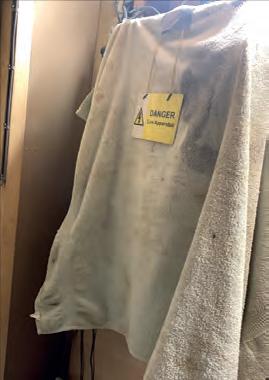
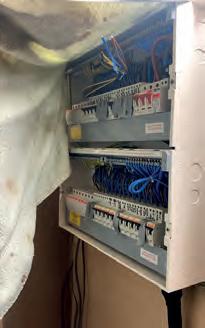
They put a label on the consumer unit to point out that a towel does not comply with BS7671 "although for diplomatic reasons we replaced the sign with a more polite one explaining that we had made the consumer unit safe for them."
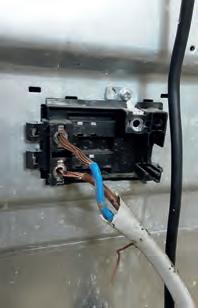












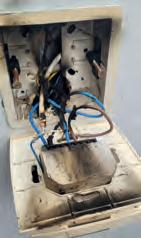
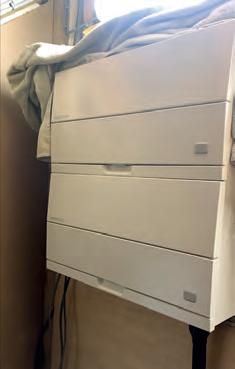






Martin Cheshire of CT Electrical Engineers in Warwickshire had a phone call from a customer who reported sparking noises along with a 'burning' smell coming from their underfloor heating. At the property, Cheshire removed the front cover once he'd isolated the circuit. "It was on the verge ofcatchingfire," he says. After carrying out some tests, he realised that the unit was being fed via a 1mm flexible cable directly off the socket-outlet's circuit (32A) via a connector block behind the plasterboard. He disconnected the unit, removed the flexible cable, and fitted a junction box and blank plate.


Jake Moore of Flow Electrics in Burgess Hill, West Sussex, came across this work carried out by a bathroom fitter "who dabbles in electrics, which nearly killed a 17-year-old girl in the shower". There were loose connections on all three conductors. There was thermal damage to the shower enclosure, so Flow Electrics replaced the shower.
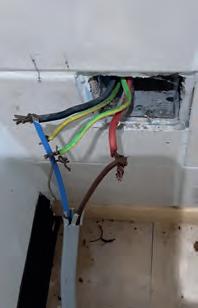

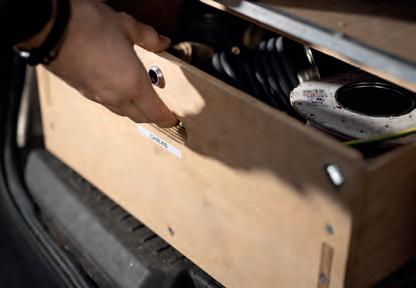
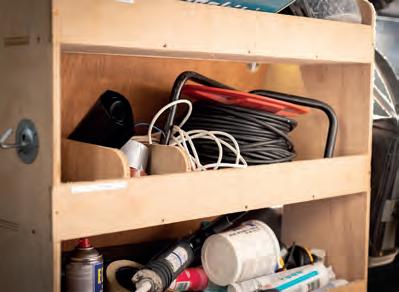
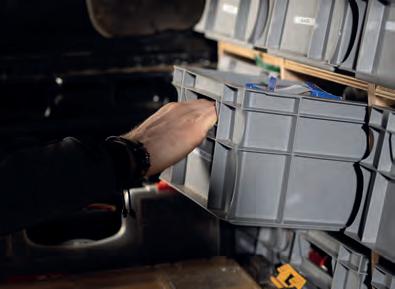
From Homer to Mark Twain via Shakespeare, there's a long literary tradition that tells us that 'clothes maketh the man'. In Connections, the van maketh a man or woman. You can tell a lot from the way a vehicle is racked (or not), and in this occasional series, we are focusing on some superior interiors.
Before this van was racked, "it was messy," says its owner, an NICEIC registered contractor. "It was full of boxes and it started to affect our productivity, as we were wasting time trying to find things, and buying things we already had."
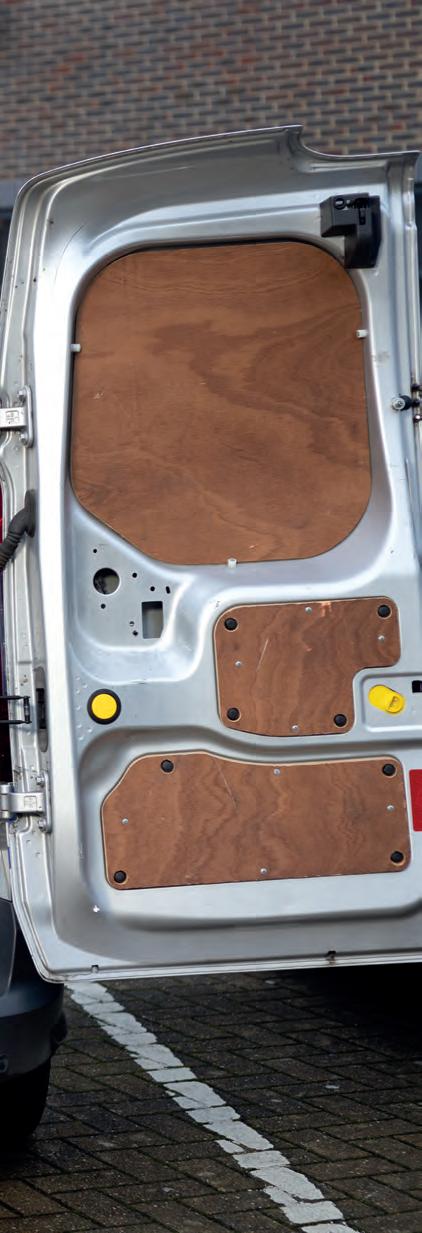
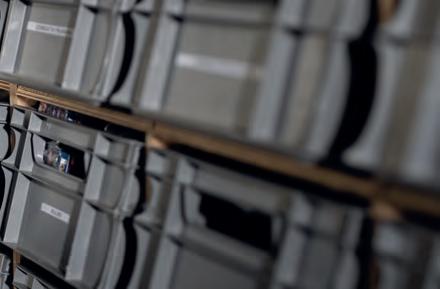
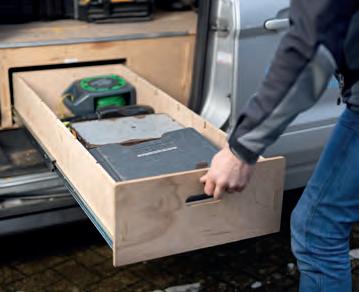

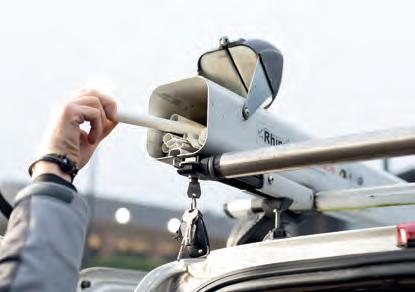
He chose cost-effective plywood over b metal, and went to a specialist company in Boreham Wood for the racking. The raised j floor houses two long drawers, one for ...:i cables and the other for test equipment. ;;.; And being raised, it's better for your back, §:: the contractor adds. ffi The left-hand side has ply shelving, 0 which carries hole saws, extension b cables and the like. The right-hand side S:: comprises two modules, with a set of
grey plastic euro crates each. They too are labelled and carefully positioned, so the crates containing socket-outlets and switches are high up and at the back, making them easy to get to. The crates can be pulled out and taken to a job.
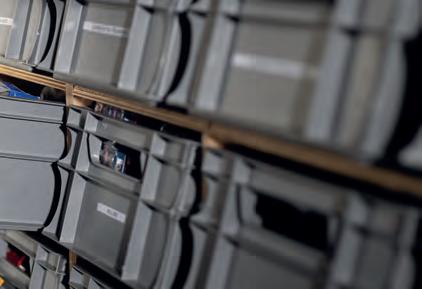
Equipment that's used less often, such as that for fire alarm installations, is nearer the front of the van. Bigger equipment -toolboxes, tool bags, the vacuum cleaner -sits on the floor.
On the roof is a 3m-longvan tube, typically used by plumbers. This one holds plastic tubing.
He describes the big Veto as "the Rolls Royce of bags; it smelt like leather when I first bought it." But it never leaves the van -instead it's used as extra storage . "We try to reduce the number of things we're taking out of the van for ajob, as that reduces heavy lifting," he adds.
The plan is to buy a second bigger van as the business is moving into solar PV installations. This one will be kept for EV charging point work.

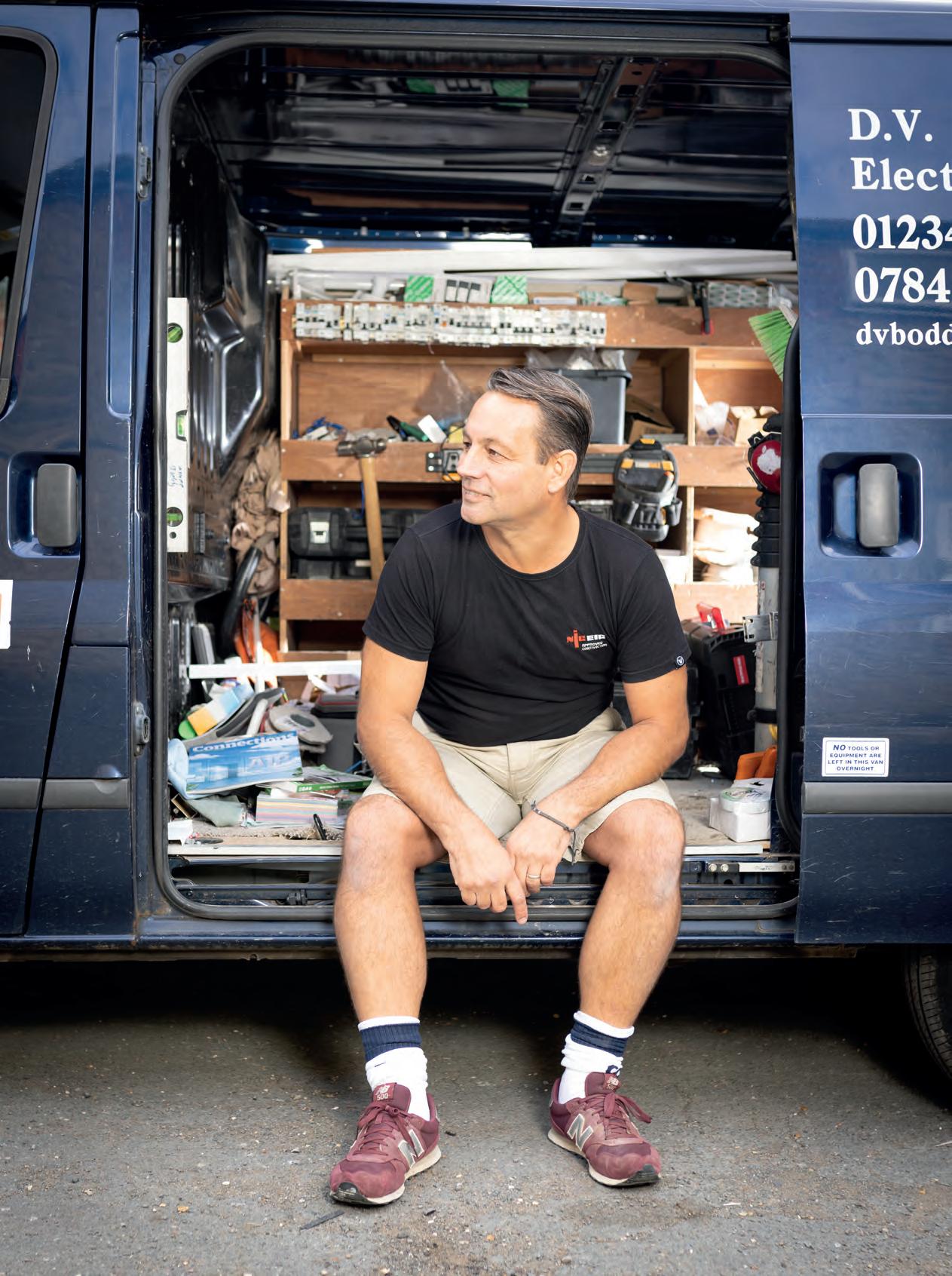







Ata converted mill in the market town of Olney near Milton Keynes, no expense has been spared, says Matt Boddy ofD V Boddy (pictured left). The local firm handled the electrical installation for the home's renovation and extension, which included a swimming pool and gym. In the latter, cabling was run through metal conduit "for the exposed soffit, industrial look", Boddy adds.
It's this sort of challenging job that Boddy likes to prep for his surveillance assessment with his NICEIC assessor. "It's good to talk through the tech; I always have a list of questions for him," he says. "I get on well with my assessor, he knows his stuff, and if something crops up that he doesn't have at his fingertips, he finds it out."
Boddy has been involved with the family business for about 25 years, and for the last 15 years has been a Qualified Supervisor. He's one of our brand ambassadors, through the new campaign, NICEIC § Works For Me.

As well as learning from his assessor's valuable feedback, Boddy undertakes continuing professional S development by watching NICEIC webinars. He's also attended
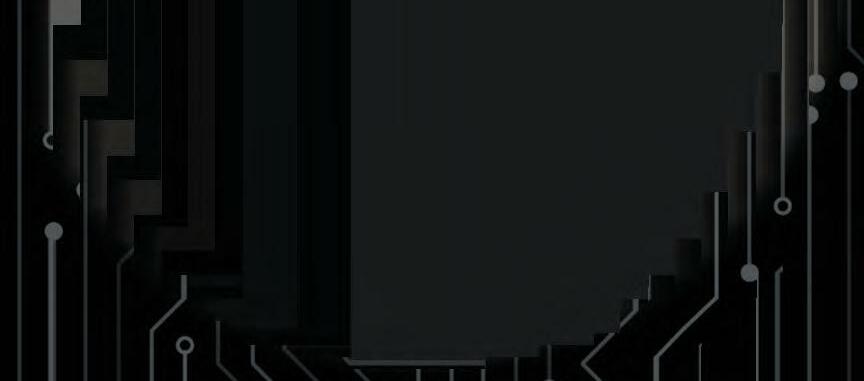
>---1 training on fire systems and emergency lighting, and EV



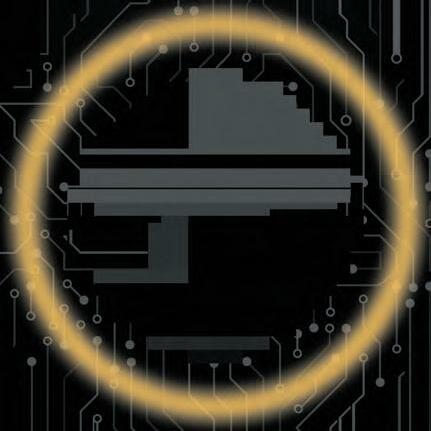
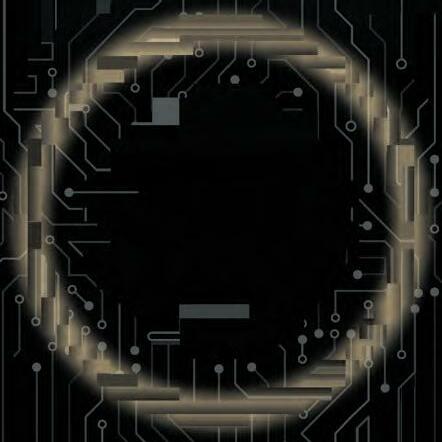
charging in person at our HQ. He says of these courses: "Each time, there was a brilliant guy running it; he really knew his stuff."


We'll be championing our ambassadors throughout the year on Twitter, Face book and Linkedln. To check out more of Matt's projects, head over to www.niceic.com/ works-for-me. If you'd like to get involved or share your story, contact marketing@niceic.com.
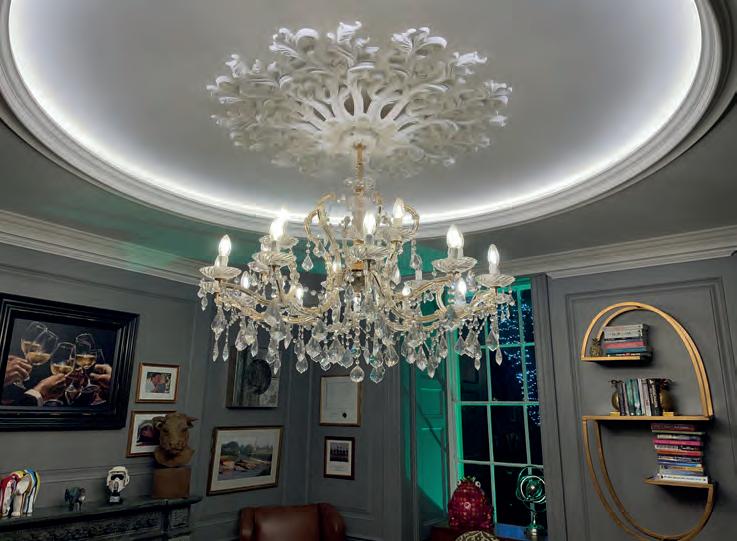

With sales of new petrol and diesel vehicles due to end in 2030 and sales of new hybrid vehicles ending in 2035, sooner or later we are all going electric. If you were the person responsible for ensuring there would be enough EV charging points in use by then, you could be forgiven for feeling slightly panicky about it.
True, the speed at which new charging points are being rolled out in public places, car parks, workplaces and on household driveways is impressive. According to Zap-Map and the automotive industry (SMMT), by October 2022 there were 35,778 public EV charging points in the UK (excluding those at homes or workplaces). That's a 35% increase on 2021, and there are almost 600,000 EVs.
More contractors will also be installing charging points at new homes of all kinds in future, following the introduction of Part S of the Building Regulations (England) in June 2022, which mandates EV infrastructure installation for all new-build residential properties (see page 27).

not-for-profit independent Centre of Excellence for low carbon and fuel cell technologies). He points out that this will also include many people who use vans for work, keep them at home overnight and will need to charge them more frequently than will most car drivers: maybe nightly, instead of once a week.
Another problem is that while installing a charging point on your own property when you have a driveway is a legally permitted development, if there is no off-street parking on your property a charging point requires planning permission, adding to costs and potential stress for the householder. Local authorities, and central and devolved governments are all thought to be considering how to resolve this issue.
As for connecting a charging point on a home to a vehicle on the street, the makeshift solution some ofus have already seen is to run a cable across the pavement from the charging point to the vehicle inside a portable cable guard. Joltify, which specialises in installing charging points, has worked for EV drivers planning to use this arrangement on private estates.
you live in a terraced house or a flat, for example?

This is only part of the story, however. Research from Hive suggests that 90% of EV sales are to people who can have charging points installed easily on their driveway. Charging at home is convenient and much cheaper than at most public charging points, some of which are so expensive that the financial benefit of using an EV almost disappears. But what if, like many people, you don't have w. dedicated off-street parking -if :;E A A
"Maybe 34% of all cars will not have a dedicated off-street parking place," says i:c: Chris Rimmer, deputy head of department at Cenex (the
One problem is that local authorities' tolerance for this arrangement seems to vary. J oltify development manager Tom Luciani says that some councils seem to be "saying they wouldn't prosecute anyone for placing a cable on the pavement if adequately shielded with a cable protector, but they will keep their position under review and may clamp down on this ifit proves to be a health and safety issue".
Installingchargingpaintsfar manydomesticset-upsisfarfrom straightforward,andyetdemandishigh. Weexplorethelatestsolutions




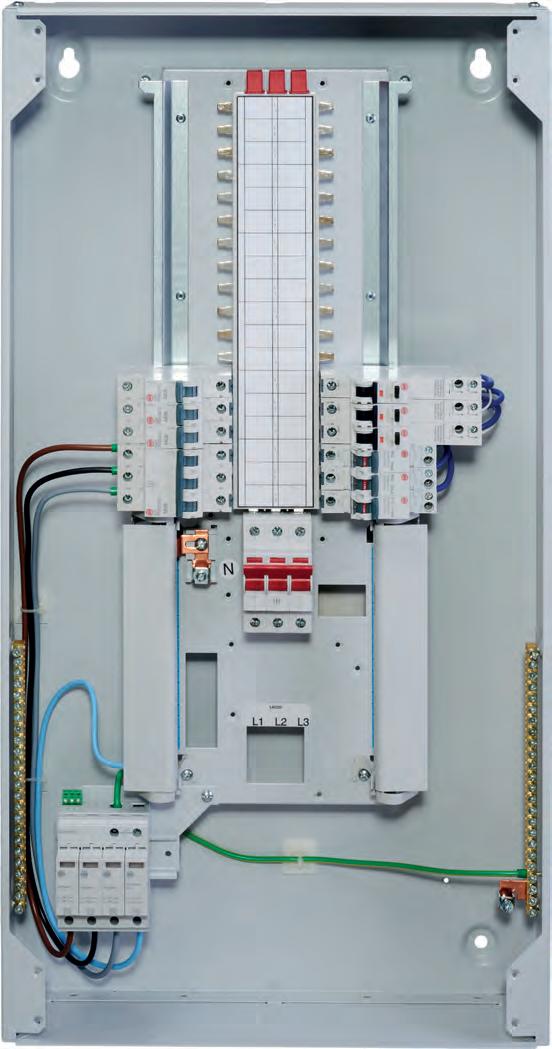

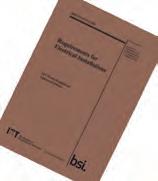


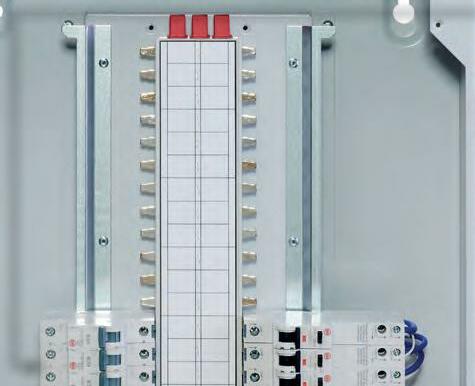
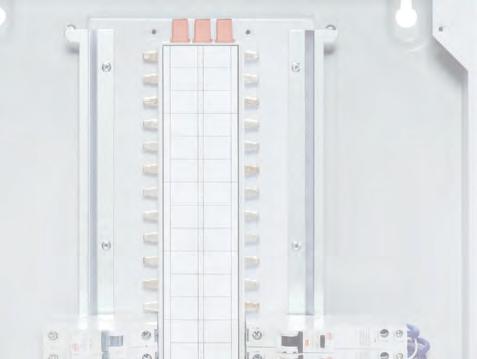










Alternative options include slipping the cable into a purpose-built gully on the pavement (see below) and a range of more hi-tech options, the practicality and availability of which is still uncertain (see page 28). Local authorities will need to help EV drivers and installers find alternative solutions. The gully may be a cost-effective option in many cases. A pilot scheme using them was run by Oxford City Council in 2017, then followed by a larger pilot at Oxfordshire County Council in 2021 and 2022. The council has worked with ODS, a service provider owned by Oxford City Council, to develop a purpose-built solution, called Gul-e. There are now 26 Gul-e chargers installed at properties across the county.
"The equipment is fairly simple, but we've had to spend a lot of time working on legal issues, licensing, town planning, insurance and so on," says Elizabeth Bohun, lead technologist for EV integration at Oxfordshire County Council. The pilot will end in a few weeks, at which point the county council will decide whether to extend it.
In April 2022, grants offered under the EVHomecharging Scheme were replaced by the EV Chargepoint Grant (EVCG), which effectively redirects financial support to tenants of flats, flat owner-occupiers, landlords and social housing providers. Installers can now claim £350 towards the cost of an installation and can make up to 200 applications per year. Communal applications may be eligible for grants ofup to £850 per charging point.
• For more information see: www.gov.uk/government/ collections/governmentgrants-for-low-emissionvehicles#ev-chargepoint-grant InJune2022,PartSof the Building Regulations came into force in England, mandating EV infrastructure for all new-build residential properties and properties undergoing significant renovations. In some settings, a full charging point will be required; in others it will only be necessary to install the wiring/infrastructure that could support a charging point in the future.
• For more information see assets.publishing.service. gov.uk/governmentfuploads/ system/uploads/attachment_ data/file/1057375/AD_S.pdf
Above and beyond: the ChargeArm carries cables over the heads of passers-byBohun stresses that there is no one-size-fits-all solution that will suit every household without dedicated on-street parking. In future, the county council will consider other methods, such as charging points buried in the kerbside or mounted in lampposts. It has also built some public EV charging hubs, where vehicles can be charged overnight.
Central Bedfordshire Council and transformation, Steven Dixon. they end up being sited. Rimmer expects "a significant acceleration in activity" around such installations during the next few years.
is also running a pilot scheme using Gul-e at 20 locations, which will end in January 2023, and again the council hopes it will be rolled out elsewhere
Leaning on a lamppost: Ubitricity fits charging posts inside lampposts
in 12 months and we'll be able to tell you more!"
"I think [the gullies] are really useful, although not without limitations. But come back to us in the area. "It's been well received," says Central Bedfordshire Council executive member for sustainability
"There is going to be a significant infrastructure roll-out and there's
going to be an opportunity for qualified installers to install that infrastructure," he says. "We need qualified and knowledgeable professionals who can put this equipment in and ensure it is going to be reliable and well-maintained." who will eventually install the charging points needed, wherever
The good news for NICEIC certified businesses with the requisite skills and knowledge is that they are the people
The Trojan Aon comprises a charging point that rises out of the pavement next to a parked vehicle, with the cable from the EV driver's home running entirely underground from the property to the charging point. Sceptics are concerned about the long-term reliability of kit buried in the pavement, but you can already see pop-up public chargers, supplied by Urban Electric, on the streets of Dundee.
trojan.energy/products/aon www.urbanelectric.london
The ChargeArm, a kind of bracket that can be extended from the wall or garden of a property when needed, carries the cable over pedestrians' heads then down to the vehicle. NICEIC head of technical services Paul Collins thinks this might work well in some situations -although "I'd be worried someone might try and swing on it."
wepoweryourcar.com/aboutf chargearm
Another possible approach in the longer term is the use of wireless charging, whereby a vehicle parks over a wireless transmitter buried in the road to receive a charge (see Nottingham's trial for taxis on page 12). A number of technology and automotive companies have developed prototype technologies, which have been effective, but this would require a completely new charging method for EVs, as well as infrastructure in the ground.
Using lamppost charging points could address a lack of dedicated off-street charging points in some locations. They are already in use, but not yet running from residential supplies. Lampposts are not always on the outer edge of pavements, which means cables could still be an issue.
www.ubitricity.com char.gy cityev.netfproductfcityline-100-cdc-smartcontactless-evse-with-cityev-safevolt




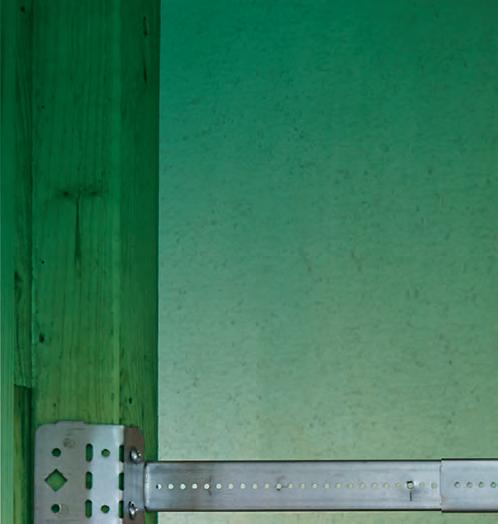
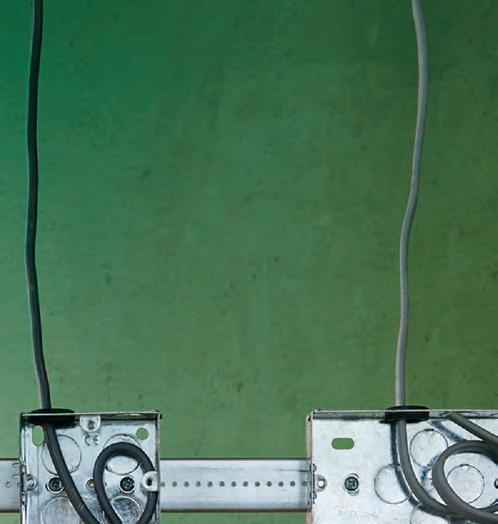
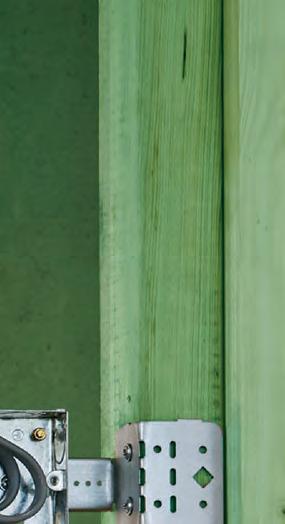


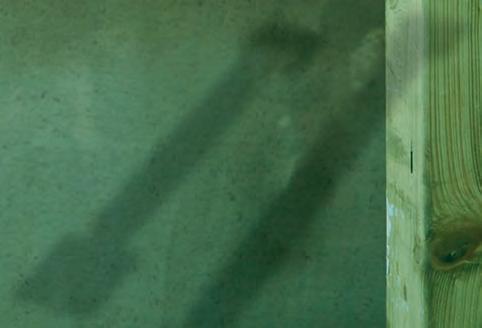

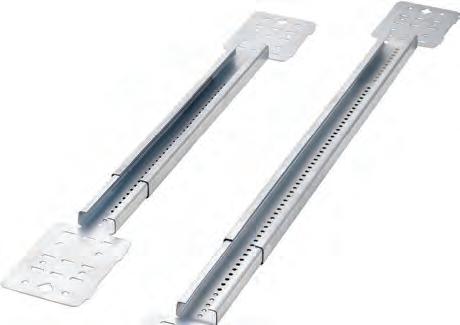
To do work that's safe, reliable and compliant, you need a bit of a head for figures. Here are a couple for you: the new Generation II Lever Wire Connector handles both 32 AMP and 4mm. You can do more, more quickly, in even the most awkward of spaces. It all adds up.
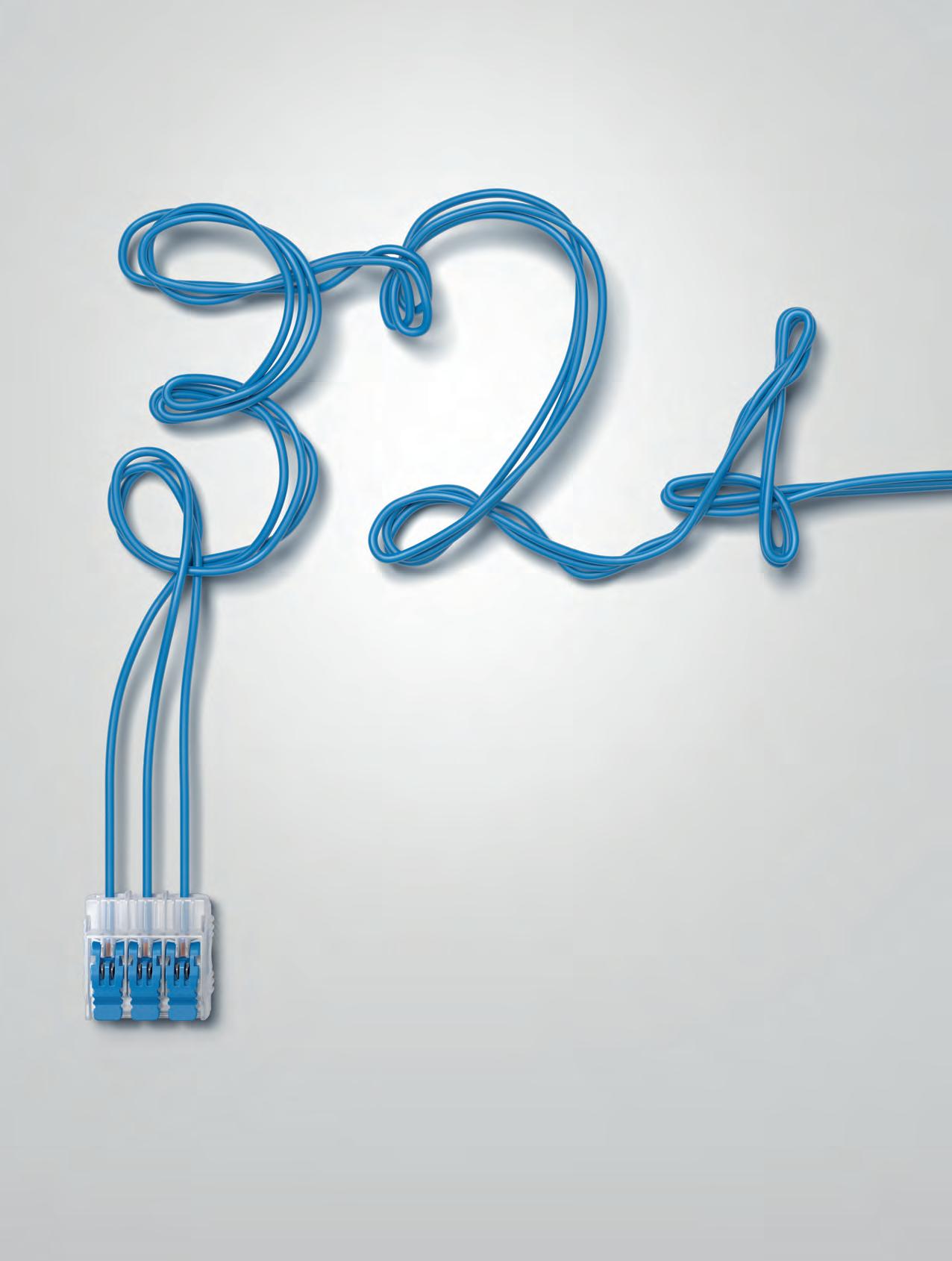

Now that Amendment 2 of BS 7671:2018 is in full effect, certified businesses need to apply the changes it introduces to the work they do. To help, we, along with other industry bodies, have been working hard to ensure the various guidance on offer is up to date and effective. A prime example of this work is shown in Electrical Safety First's refreshed Best Practice Guide 4.
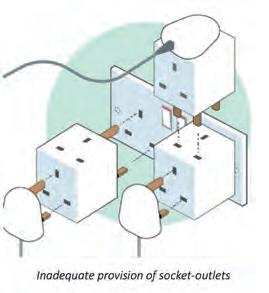
This free-to-download publication has scenario-based guidance on correct coding and reporting, reflecting the changes brought in by Amendment 2. NICEIC urges all certified businesses doing Periodic Inspection and Testing to take full advantage of this tool. Copies can be downloaded from www.electricalsafetyfirst. org.uk/professional-resources/ best-practice-guides/
The Wiring Regulations Advisory Group (WRAG) Q&A guidance is also worth noting. Again, created by a cross-industry group including NICEIC, this free online guidance provides industryagreed answers to the most commonly asked questions. It can be found at www. electricalsafetyfirst.org.uk/ professional-resources/wiringregulations/
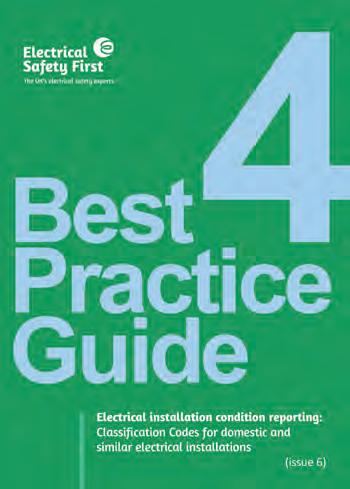
apprentice in 1994, describes Fairweather as "a very valuable member of our team, who has continued to grow in both confidence and ability since he began his apprenticeship with us".
Fairweather says: "It was an amazing experience and I would recommend it to any apprentice who gets the opportunity."
Second and third place went to Andrew Horne of A Campbell Electrical Services and SECTT, and Tommy Adlam of MMES 2012 Ltd and Bridgwater & Taunton College respectively. Lyam Thorpe from the College of West Anglia and DJB Electrical Services was highly commended.
All finalists won a haul of useful tools and kit, and Fairweather picked up a Megger Multifunction Tester, an iPad from the NICEIC and a prize bundle of a 10-piece electricians toolkit with rucksack, Mighty Rod pro cable rod kit, automatic wire stripper, voltage detector and trimming knife from Electric Center.
Craig Fairweather (pictured above left) has been named 2022 SkillELECTRIC champion following a two-day UK final event at Middlesbrough College.

Employed by NICEIC certified business McDonald & Munro in Moray, Scotland, and trained by SECTT, Fairweather excelled in a tricky task to install a range of first and second fix items, including PVC/PVC surface clipping, plastic conduit, trunking and fireproof cable.
McDonald & Munro director Miguel Gomez, who joined the company as an
Meanwhile, everyone at NICEIC would like to congratulate Alex Rendell, who represented the UK in the WorldSkills final in Austria. We have followed Rendell's journey since 2019, when he competed in the SkillELECTRIC competition. In Austria, he won a Medallion for Excellence, awarded to those who reach world-class standards. Huge congratulations to Rendell and his employer, J Norris Electrical, a NICEIC certified business. Rendell now has the potential to compete at the Euro Skills 2023 event which is set to be held in Gdansk, Poland, while SkillELECTRIC 2023 will open for entries in February.
NICEIC'shittechnicalwebinar programmehassmashedallprevious records,morethandoublingits reachini!Di!i!.
THEWIRE'si!i!episodesfrom JanuarytoDecemberrackedupan impressiveBD,000viewsthrough itslivebroadcastsandon-demand service.Andaudiencenumbersforthe livebroadcastswereupawhopping 50%oni!Di!l,withaverageviewing numbersexceeding1,300perepisode.
"We'veidentifiedarealwinning formulawithTHEWIRE,"saysPaul Collins,NICEIC'sheadoftechnical services."Thefeedbackshowswe're consistentlyhitting4.7outof5stars, withcommentsindicatingthatthe topicscoveredarerelevantandtimely.
"OurAmendmenti!episodewasa greatexample.Timedtocoincidewith thedaythedetailswerereleased, thisepisodehasbeenviewedover 10,000times,"headds.
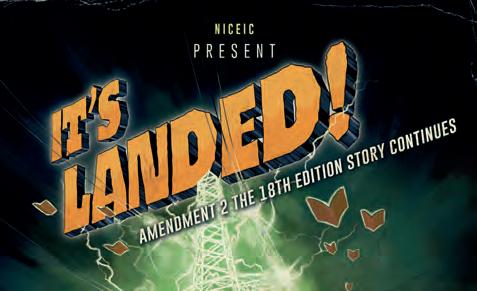
FreeandexclusivetoNICEIC registeredbusinesses,allepisodes fromthei!Di!i!seriesareavailableto watchondemandnowatwww.niceic. com/events,whereyoucanalsosign upforupcomingepisodes.
KickingoffinJanuary,ouri!Di!3 line-upwillcovernewtopicsincluding BestPracticeGuide4, EICncoding, everythingyouneedtoknowabout SPDs,consumerunitreplacement andsolarPV.
AllCPDcertified,thesewebinars counttowardsyourElectrotechnical AssessmentSpecification re11uirement,andforeachepisode viewedyou'llreceiveapersonalised CPDcertificate.
VeronicaJenningshaswontheeaeeECAEdmundsonApprentice oftheVearAward.JenningsworksatlmtechEngineering ServicesinNottingham,aNICEICcertifiedandECAmember firm.Jenningsscooped£1,500inprizemoney,atoolkitandan overseasstudytour.
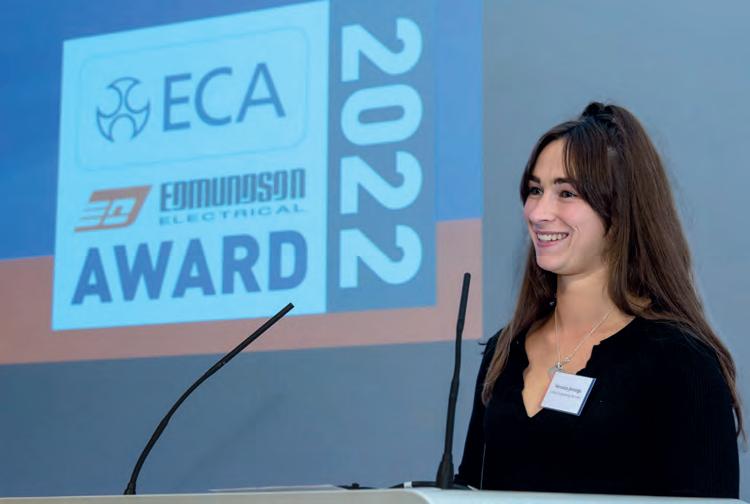
Theawardaimstorecogniseoutstandingapprenticeswhohave goodtechnicalskillsandarerolemodelsforothersintheindustry.
"Forthenextfewyears,mymainfocuswillbeworkinghardon sitestomoveupinthecompany,"saysJennings."Andlmtechhas invitedmetojoinitscoreED61group,whichfocusesonsupportof thenextgenerationandtakingpositivestepsintheworkplace."
Thetworunners-up,whoeachwon£750andatoolkit,areJames StanfordofGilbert6StamperandCharlieEwingofTheRosebery Group-bothNICEICregistrants.
TheNICEICPocketGuideApphas beendownloadedanimpressive 30,000times.Butit's qualityas wellasquantity,astheapphas beencrowneda Professional Electrician 6 Installer2022'Top Product'awardwinner.
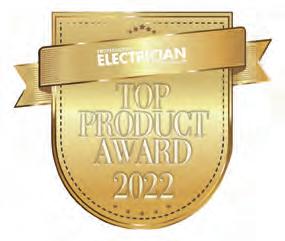
Theawardsrecognise manufacturersandsuppliersthat havemadea realdifferencetothe electricalcontractor'sabilityto getthejobdoneefficiently,safely andprofessionally,whetherthat's intheformof innovativeproducts, toolsortime-savingsolutions.
Freeto download,andexclusive to NICEICregisteredbusinesses, theappcanbedownloadedfrom yourchosenappprovider-simply searchfor NICEICPocketGuide.
FollowingthefantasticNICEICquiz nightsanda greatresponseto our recentcustomersurvey,NICEICwas delightedto donateoverElDkto the ElectricalIndustriesCharity.
NICEIC'snewmarketingdirector, AmandaFaulkner,says:"I wouldlike to thankthe9,700ofyouwhotook thetimeto completeoursurvey, andthe500+of youwhojoinedour quiznights.Vourresponsesand participationhelpedraisea healthy sumforatrulyworthycause.

In colder weather and with a cost ofliving crisis, electric heaters are increasingly popular, but they must be used with care, warns Electrical Safety First.
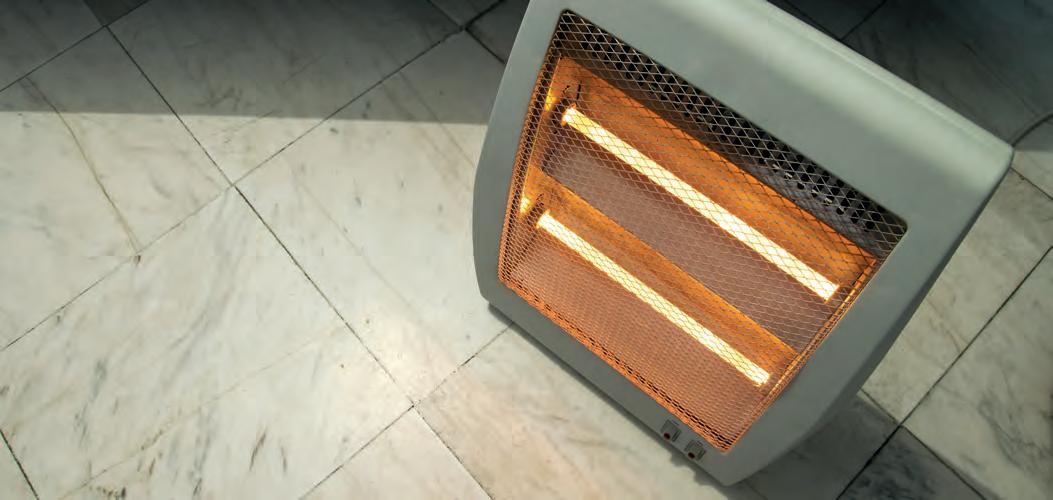
A recent survey by the charity found that 42% ofrespondents are either definitely using or considering using an electric heater to heat a single room in their home. That's an 8% increase year on year, the equivalent of 4.3m people.
ESF has issued advice that could help avoid devastating fires and save the lives of your customers, so check out the social media channels ofESF and NICEIC and share their content on the topic to help
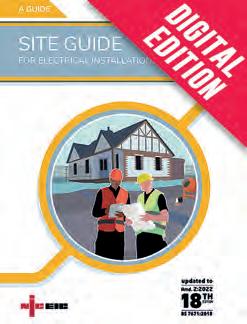
keep your customers safe this winter. This advice includes:
• Put the heater on a level surface, well away from anything or anyone that could knock it over.
• Make sure the heater is well away from combustible materials, such as paper, furniture or curtains.
• Never use it to dry clothes!
• Never leave your heater on and unattended for long periods, or while you're asleep.
• Never power a heater from an extension lead -they can easily be overloaded and cause fires.

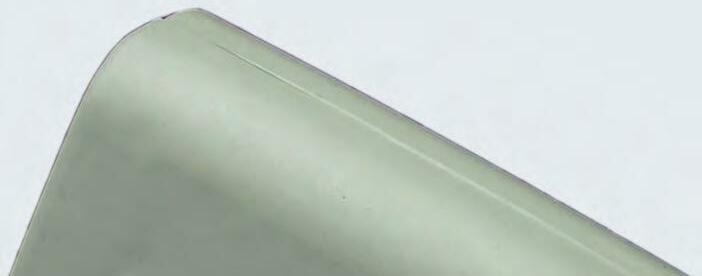
• Make sure you buy from manufacturers or retailers that you know and trust. Avoid second-hand heaters but, if you do have one, then ask what safety checks have been carried out.
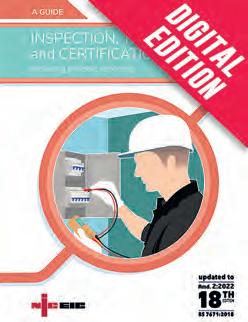

• Register your appliance and check your heater has not been recalled.
willbeprovidedwitha code andinstructionsonhowto redeemyourproductviathe VitalSourceBookshelfapp. What'snottolike?















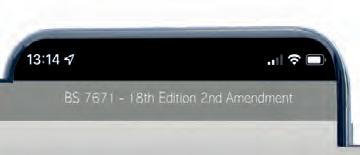

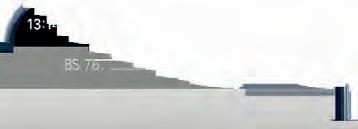

An in-depth, CPD accredited webinar series which covers the topics that matter most. You spoke and we listened, this series of THE WIRE will feature hot technical topics plus business sessions to help you with those tasks that keep you up at night ...

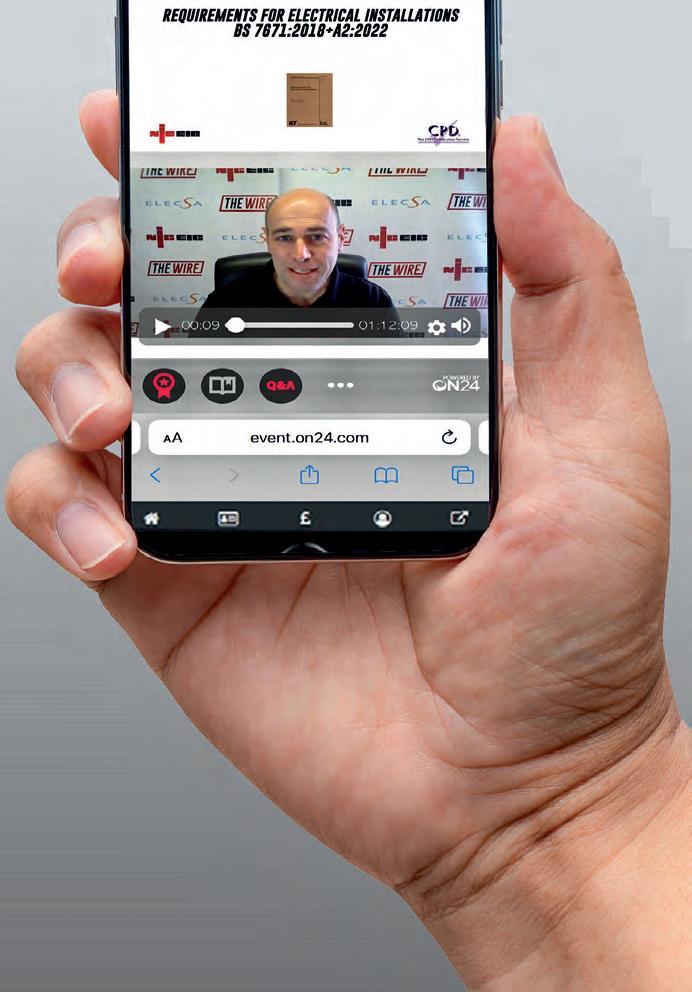
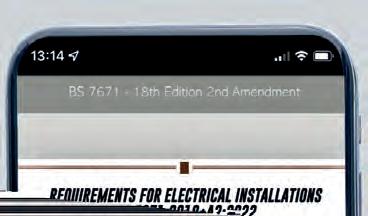









OurtechnicalengineersareanhandtaansweryourQuestions, coveringtopicsfromsupportingcablesagainstcollapse ta additionalprotectionfarexteriorlightsofdomesticpremises




Are the requirements for supporting cables against premature collapse of BS 7671 applicable to data and telecommunication cables including fibre-optic cables?
Yes. Indent (vi) of Regulation 110.1.2 confirms that BS 7671 includes requirements for fixed wiring for information and communication technology, signalling, control and the like (excluding internal wiring of equipment).
Regulation 521.10.202 requires that wiring systems shall be supported such that they will not be liable to premature collapse in the event of a fire. This includes data and telecommunications cables. Informative note 1 to this requirement confirms that the intent of the requirement includes consideration of the possible hindrance of evacuation or firefighting activities by wiring systems which prematurely collapse.
How do I determine the maximum permitted earth fault loop impedance (Zs) for a circuitbreaker or the overcurrent characteristic of anRCBO of nominal rating (I..) not listed in Table 41.8 of BS 7671?
Circuit-breakers to BS EN 60898-1 and RCBOs to BS EN 61009-1 are available in a number of rated currents (JJ not listed in Table 41.3 of BS 7671.
The maximum permitted earth fault loop impedance (Zs) of a device ofrated current (JJ other than those listed in Table 41.3 may be determined by: e enquiry from manufacturer's data, or e the use of the formula given in the final column of Table 41.3 applicable to the Type and, for Type D devices, requisite disconnection time: e Type B: 230 x 0.95 / 5 xin
• Type C: 230 x 0.95 / 10 xin





• Type D: 0.4 s disconnection time: 230 x 0.95 / 20 xin
• Type D: 5 s disconnection time: 230 x 0.95 / 10 x In,
Can removing a plug from a socket-outlet be used as a means of isolation in accordance with BS 7671?





Table 537.4 of BS 7671 Guidance on the selection of protective, isolation and switching devices states that the following plug and socket-outlet combinations are suitable for on-load isolation; that is, disconnection while carrying load current:
• BS EN 60309 plugs and socket-outlets
• BS 1363-1 fused plugs with BS 1363-2 switched or unswitched socket-outlets
• BS 546 plugs and switched or unswitched socket-outlets
• BS 5733 plugs and socket-outlets.
Any means of isolation must also meet any other relevant requirements of BS 7671 relating to the provision of that function.
Is additional protection by means of an BCD of rated residual operating current (II!,,.,)not exceeding 30 mA required for all exterior lights of a domestic (household) premises?


Yes. Regulation 411.3.4 of BS7671 requires additional protection by an RCD with a rated residual operating current not exceeding 30 mA to be provided for any AC final circuits supplying luminaires within domestic (household) premises.
The term 'premises' includes any associated garden,yard,garageandthe like within the boundaries of the premises (see Note to Regulation 110.1.1).
During a consumer unit replacement, a shared neutral is found between the upstairs and downstairs lighting circuits. Which requirements relate to this non-compliance?



Regulations 314.4 and 521.8.2 require that the line and neutral conductors of each final circuit are electrically separate from those of every other final circuit. This is to allow each circuit to be isolated independently of all other circuits and so prevent a circuit intended to be isolated being energised indirectly.

In such cases, a borrowed neutral will not be isolated by a single-pole means of isolation which isolates the line conductor from the "other" circuit. The neutral will continue to be fed from the "other" line conductor that is still energised.
Is it still permissible to NOT provide additional protection of a socket-outlet for the supply of a specific item of equipment by BCD of rated residual operating current (I~ not exceeding 30 mA on the grounds that the socket-outlet has been labelled, or otherwise identified, as being provided to supply that particular equipment only? No. This exception was removed with the publication of BS 7671:2018 (18th Edition),
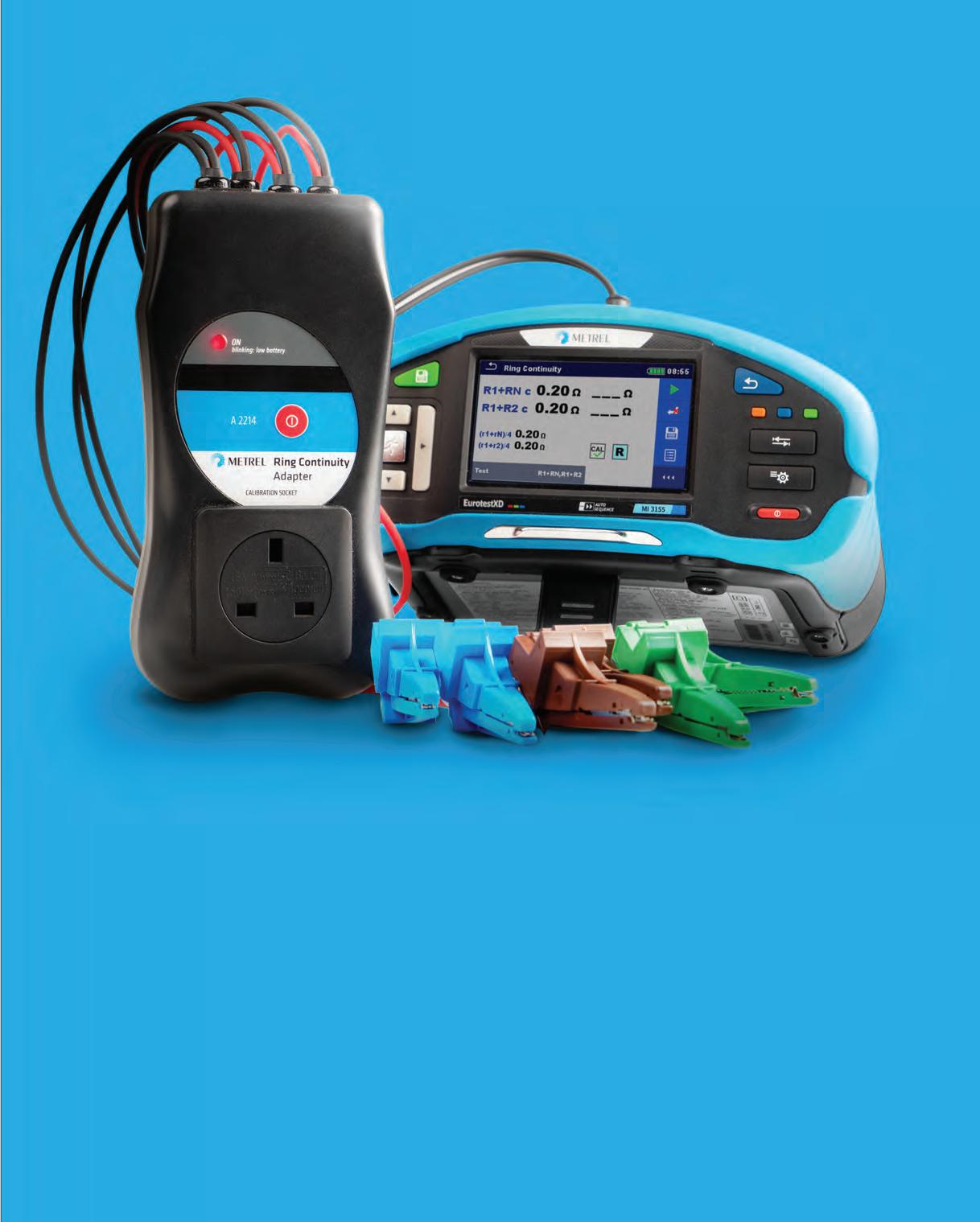



Objective: BS 7671 has contained requirements for overvoltage protection since 2001. Most commonly such protection is provided by surge protective devices (SPDs). This article looks at the types of SPD recognised by BS EN 61643 and provides a basic summary of their means of operation
A power surge, or transient overvoltage, is an increase in voltage significantly above the designated level in normal operation. Various factors can cause an overvoltage, including lightning strikes, switching events in the transmission and distribution system and the switching of inductive or capacitive equipment within the installation.
An overvoltage may be classified as either a surge or spike. Surges tend to be oflower magnitude but greater duration than spikes.
Both surges and spikes can cause
major damage to electrical and electronic equipment if the voltage is high enough. The effects of a surge or spike can result in either immediate failure or latent damage to the components or insulation in equipment which only becomes evident as failure over a longer period of time (see Fig 1 and Fig 2). Furthermore, equipment failure may also occur as a result of a number of overvoltage events whether occurring in close succession or some time apart.
A surge protective device (SPD) is a device containing at least one non-linear component that is intended to limit surge
voltages and divert surge currents (BS EN 61643-11:2012+A11:2018,Clause 3.1.1). Fundamentally, SPDs divert the excess energy contained in the surge to earth away from the electrical or electronic equipment being protected.
According to Clause 5.1 of DD CLC/ TS 61643-12:2009 Low-voltage surge protective devices Part 12: Surge protective devices connected to low-voltage power distribution systems - Selection and application principles, an SPD in a power system: • shall not have a significant influence on the operational characteristics of the system to which it is applied in the absence of surges;
Fig 3 Simplified depiction of SPD in operation
• will respond to surges by lowering its impedance and thus diverting surge current through it to limit the surge voltage to its protective level; and
• after the surge has passed, recover to a high-impedance state (see Fig3).
BS EN 61643-11:2012+A11:2018Lowvoltage surge protective devices. Part 11: Surge protective devices connected to low-voltage power systems - Requirements and test methods recognises the following types ofSPD which are discussed further in this article:
• Voltage switching type
• Voltage limiting type (sometimes referred to as 'clamping' type)
• Combination (voltage switching and voltage limiting) type.
These have a high impedance when no surge is present, but their impedance reduces extremely quickly if subjected to a voltage surge above the maximum operating voltage of the supply (as shown in Figl). Voltage switching type SPDs typically employ spark gaps, gas discharge tubes, triacs and thyristors.
Voltage switching SPDs employing a spark gap consist of two electrodes separated by a gap in air or gas in a glass or ceramic tube. One of the electrodes is connected to the line or the neutral conductor. The other electrode is connected to the protective conductor (PE).
Fig 5 Characteristic for gas discharge tube (GDT) and Breakover diode (BOD) SPDs Maximumsystemvoltage
Systemoperatingvoltage
Current
Fig 4 Voltage switching components. Left: Spark gap. Centre: Gas discharge tube.
Right: Triac
During normal operation, with the installation at its rated voltage, the gap has a high impedance (typically greater than 100 MQ) and no current passes across the gap between the electrodes. When an overvoltage occurs, the impedance between the electrodes falls rapidly (to typically less than 1 Q) and an arc bridges the gap. The excess energy is then directed to earth, preventing a significant voltage increase to the protected equipment. When the surge finishes, the arc collapses and no current flows across the gap.
Spark gaps can control large quantities of energy from direct lightning strikes. However their voltage protection level can be as low as a couple ofkilo-
volts. As a result, they are unable to offer sufficient protection to connected equipment downstream. Modern spark gaps have additional methodologies to support the ignition of the spark gap. This limits the residual voltage to a much lower level, far below the voltage that would result based on the electric strength of the air alone. As such, a trigger spark gap can achieve a much lower (better) voltage protection level.
A spark gap reaches the end of its operational life when either degradation ofits electrodes or the electronic ignition circuit means the device is no longer able to strike an arc, so presenting a permanently open circuit.
A gas discharge tube (GDT) comprises two electrodes separated from each other by argon gas in a glass or ceramic tube.
When exposed to the device's sparkover (also referred to as the trigger or breakdown) voltage, which is in excess of the circuit's nominal voltage, the gap is

bridged by an electrical arc in much the same way that a glow type starter for a fluorescent lamp operates. This allows the surge current to flow, so limiting the surge voltage. SPDs employing GDTs alone are commonly used in telecommunications and high frequency circuit applications due to their low capacitance (see Fig 5).
GDT SPDs have a high surge current-carrying capability. However under transient conditions, the sparkover voltage can be up to 1,000 V and thus they are unsuitable for protecting modern electronic equipment on their own. Once switched on, GDTs remain turned on, with 20-30 V across them, for as long as power from the system flows. This precludes their use on their own in mains and power type applications as the GDT will still conduct until the AC cycle drops to near zero volts (each zero cross of 50/60Hz mains supply) and the follow current could cause the supply overcurrent protective devices to operate.
Fig 6 Voltage limiting components
Left: Transient voltage suppressor diode
Right: Metal oxide varistor
Fig 7 Characteristic for metal oxide varistor (MOV) and suppressor diodeSPDs
Breakover diodes. triac, thyristor and similar
These present a high resistance under normal operating conditions, rapidly switching to a low resistance when the voltage across the device exceeds a predetermined value and the resultant current exceeds the breakover current. Breakover diodes (BODs) are thyristor semiconductor devices. As shown in Fig 5, BODs behave more like the ideal characteristic compared to a GDT, but they have much lower surge current ratings. Such devices are therefore more commonly used as a secondary protection measure to data and telecommunications systems.
Voltage limiting type SPDs typically contain metal oxide varistors (MOV), avalanche breakdown diodes and transient voltage suppressor (TVS) diodes (seeFig6).
Under normal conditions, an MOV has a very high resistance (typically several 100 MQ) - a virtual open circuit. In the presence of a voltage transient where the 'clamping voltage' rating of the MOVis exceeded, the MOV transitions quickly from a high resistance path to a low resistance path (see Fig 7).
Surge current then passes through the MOV to the protective conductor, bypassing the connected load (see Fig 3). This results in the transient voltage being 'clamped' to a safe protection level with the potentially destructive energy being absorbed in the mass of the MOV,thereby providing protection to vulnerable equipment.
The response time ofMOVs is very fast, typically within a few nanoseconds. They offer a significantly lower (better) voltage protection level than, for example, spark gaps.
MOVs suffer progressive degradation throughout their operational life due to the small leakage current that occurs at nominal voltage and, particularly as a result of every operation in the event of a surge, including commonly occurring minor temporary overvoltages. At their end oflife, MOVs become a low impedance short-circuit, therefore a means of disconnecting them safely from the supply and for indicating their functionality state when the operational effectiveness is at an end is necessary.
The transient voltage suppressor (TVS) diode is a ruggedised version of the Zener diode, with an enlarged semiconductor
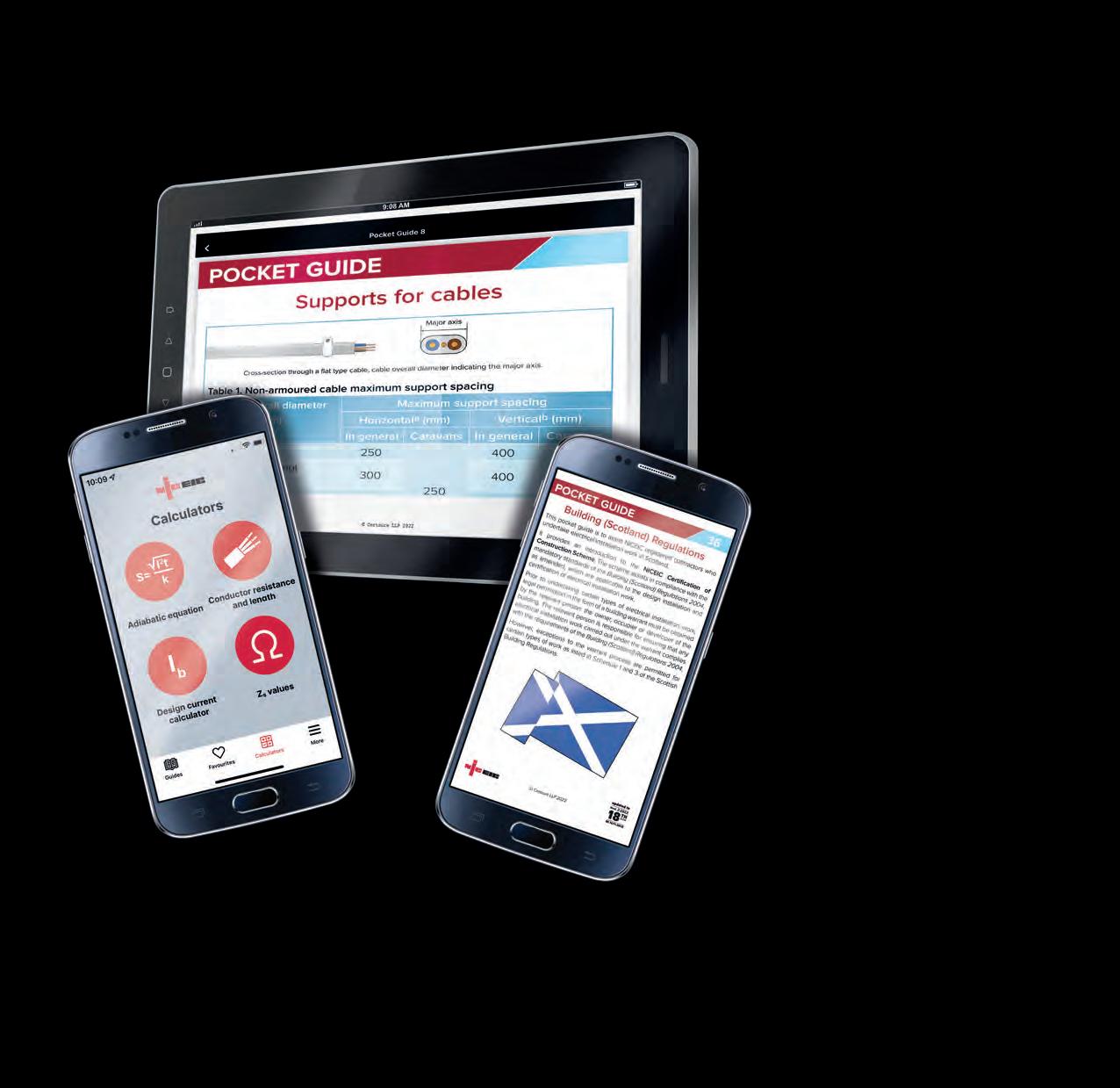


Fig 8 Example of a combination type SPD
60µs
0
junction. Its characteristic is closer to the ideal voltage limiting device
600 500 400 300 200 100 0 than an MOV (see Fig 7), but it can only handle a relatively low surge current before destruction.
SPDs using TVS diodes can respond to overvoltages faster than SPDs employing, for example MOVs or GDTs and hence are utilised for protection of equipment for low signal line data transmission.
These incorporate both voltage switching components and voltage limiting components and as such can mask the disadvantage of one technology with the advantage of the other and vice versa. This synergistic or hybrid approach can allow SPDs to have a high surge current handling capability (the positive attribute of a GDT) with a superior voltage protection level or low clamping voltage. An example of this is shown in Fig 8 where an SPD protects equipment from surges on a typical low current 24 V DC power supply. Within the SPD there are
three component technologies -GDT, MOV and a suppressor diode.
Coordination between each of the component stages is the key to achieving the desired voltage protection level for the equipment. An inductance, Lor in-line resistance, R ensure that the GDT stage handles the high surge current such that the MOV and suppressor diode limits the transient overvoltage to a threshold below the equipment's withstand capability. The voltage waveform graphs above each respective component represent their surge characteristic and highlight their advantages. It can be seen that there are three protection stages: from coarse, through medium, to fine protection within one combination type SPD to provide robust and effective equipment protection.
Transient overvoltages can be caused by lightning strikes, switching events in the transmission and distribution system and the switching of inductive or capacitive
equipment within the installation. They can cause major damage to electrical and electronic equipment. This may be in the form of either immediate failure or sometime later after one or a number of overvoltage events.
A surge protective device (SPD) is designed to limit surge voltages and divert surge currents to earth away from the electrical or electronic equipment being protected.
Various technologies are employed, either on their own or in combination, to perform this surge protective function dependent on their particular abilities in respect ofreaction time and the degree of protection against transient overvoltage they can provide.
The next article in this series will explore SPD types available and their use in the provision of an effective transient overvoltage system.
We would like to acknowledge the kind assistance of Samad Khan of ABB Furse in the production of this article.









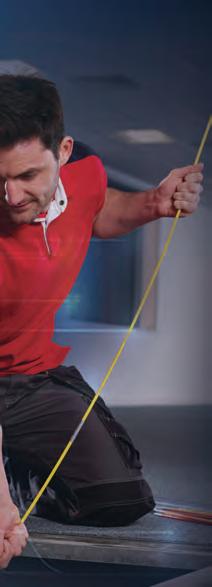



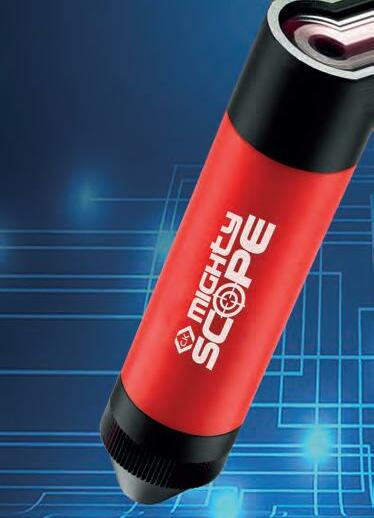



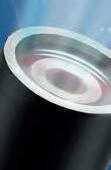



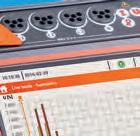
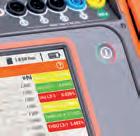


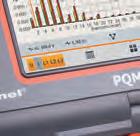



Objective:This article looks at the requirements for the provision of fire detection and fire alarm systems in dwellings and similar premises, the associated guidance issued by the devolved administrations in England, Wales, Northern Ireland and Scotland, and the current (at the time of writing) recommendations of BS5839-6
Following on from the fire at Grenfell Tower, and the subsequent related enquiries, a number of changes have been made to Building Regulations and other requirements and recommendations relating to fire detection and fire alarm systems.
Building Regulations 2010
Schedule 1 of the Building Regulations 2010, applicable to England and Wales, contains the requirements which must be met in order to comply with Regulation 4 (Requirements relating to building work) and Regulation 6 (Requirements relating to material change of use).
Requirement Bl states that:
Thebuildingshallbedesigned andconstructedsothatthereare appropriateprovisionsfortheearly warningoffire,andappropriate meansofescapeincaseoffirefrom thebuildingtoaplaceofsafety outsidethebuildingcapableofbeing safelyandeffectivelyusedatall materialtimes.
In England, Approved Document Bl 2019 (ADBl) Fire safety Volume 1 - Dwellings (including the June 2022 amendments which come into effect on 1 December 2022) gives guidance on how to comply with this requirement.
Paragraph 1.1 states that all dwellings should have a fire detection and alarm system, minimum Grade D2 Category LD3 standard, in accordance with the relevant recommendations of BS 5839-6.
It further recommends that consideration should be given to providing a higher standard of protection where occupants of a proposed dwelling would be at special risk from fire. Further advice on this is also given in BS 5839-6.
ADBl advises that a large dwellinghouse 1 has more than one storey, at least one of which exceeds 200 m 2 (Paragraph 1.5).
It further recommends that a large dwellinghouse:
• of two storeys (excluding basement storeys) should be fitted with a Grade A Category LD3 fire detection and alarm system, as described in BS 5839-6 (Paragraph 1.6).
• of three or more storeys (excluding basement storeys) should be fitted with a Grade A Category LD2 fire detection
and alarm system as described in BS 5839-6 (Paragraph 1.7).
Where new habitable rooms are provided: • a fire detection and alarm system should be installed where a new habitable room is provided: • above or below the ground storey, or • the room is provided at the ground storey, without a final exit (Paragraph 1.8).
• smoke alarms should be provided in the circulation spaces of the dwelling in accordance with paragraphs 1.1to 1.4 (Paragraph 1.9).
Each flat in a block should be provided with a fire alarm system as set out in paragraphs 1.1 to 1.4.
Where effective compartmentation is provided by means ofits construction, a communal fire alarm system is not normally needed. In some buildings, detectors in common parts of the building may need to operate smoke control or other fire protection systems, but do not usually sound an audible warning. (Paragraph 1.10).
In student residences that are designed and occupied as a block of flats, separate




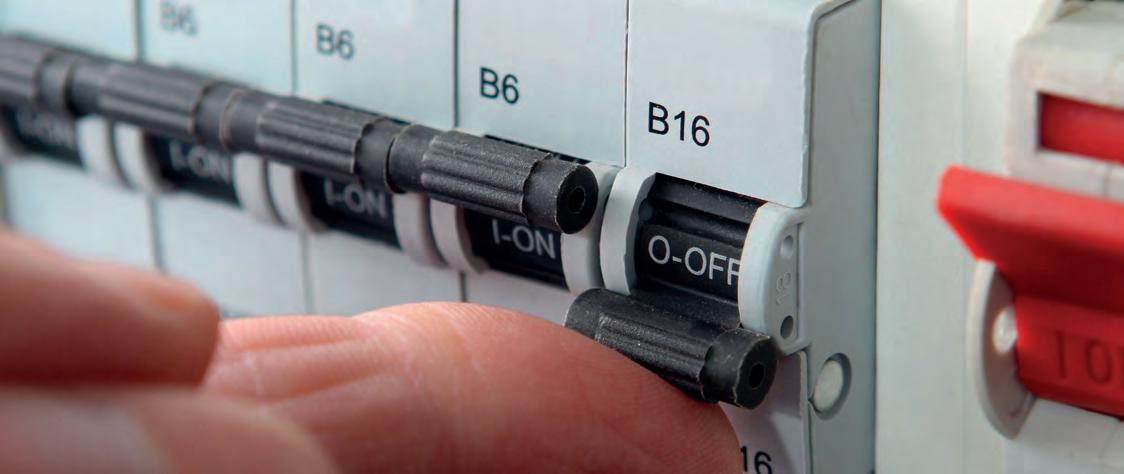
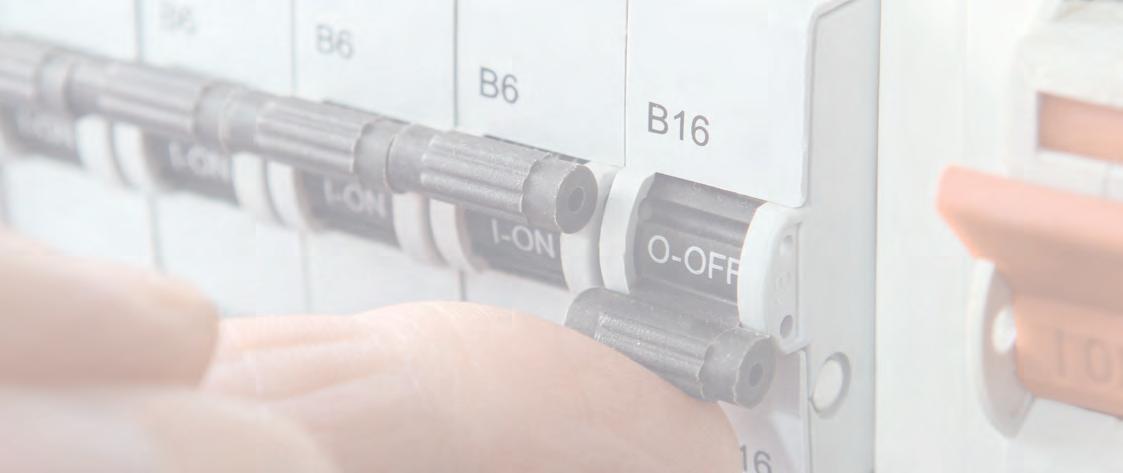
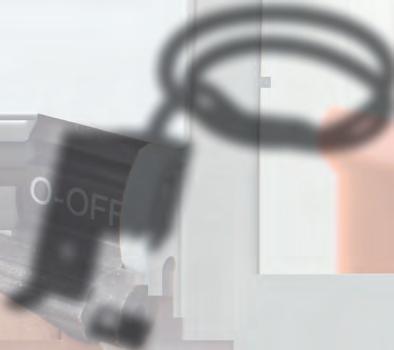

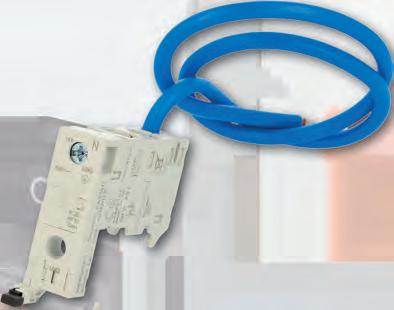

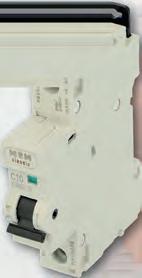


automatic detection should be provided in each self-contained flat where all of the following apply:
a. A group ofup to six students shares the flat.
b. Each flat has its own entrance door.
c. The compartmentation principles for flats in Section 7 (of AD Bl) have been followed.
Where a total evacuation strategy is adopted, the alarm system should follow the guidance for buildings other than dwellings in Approved Document B Volume 2 (ADB2) (Paragraph 1.11).
The fire detection and alarm systems in flats should connect to a central monitoring point or alarm receiving centre. The systems should alert the warden or supervisor and identify the individual flat where a fire has been detected (Paragraph 1.12).
These provisions of paragraph 1.12 do not apply to:
• The common parts of a sheltered housing development, such as communal lounges.
• Sheltered accommodation in the 'residential (institutional)' or 'residential (other)' purpose groups (purpose group 2(a) or 2(b)).
In these parts, means of warning should follow the guidance given in ADB2 (Paragraph 1.13).
Design and installation of systems
Paragraph 1.14 states that fire detection and alarm systems must be properly designed, installed and maintained, and additionally requires that design, installation and commissioning certificates should be provided for fire detection and alarm systems.
The recommendations given in the version of AD Bl for Wales are broadly the same as for England, except that:
• A large dwellinghouse of two storeys (excluding basement storeys) should be fitted with a fire detection and fire alarm system of Grade B category LD3 as described in BS 5839-6:2004 (Paragraph 1.6); and
• A large dwellinghouse of three or more storeys (excluding basement
storeys) should be fitted with a Grade A Category LD2 system as described in BS 5839-6:2004, with detectors sited in accordance with the recommendations of BS 5839-1:2002 for a Category L2 system.
Rented accommodation (The Smoke and Carbon Monoxide Alarm (Amendment) Regulations 2022)
The regulations apply to all homes in England and Wales rented by private landlords or registered providers of social housing, unless excluded. Excluded tenancies are detailed in the regulations. The regulations are not aimed at owneroccupied properties.
The following tenancies are excluded from the regulations:
• sharedaccommodationwitha landlordorlandlord'sfamily
• longleases
• studenthallsofresidence
• hotelsandrefuges
• carehomes
• hospitalsandhospices
• lowcostownershiphomes
• otheraccommodationrelatingto healthcareprovision
From 1 October 2022, all relevant landlords must ensure that:
• At least one smoke alarm is equipped on each storey of their homes where there is a room used as living accommodation. This has been a legal requirement in the private rented sector since 2015.
• Smoke alarms and carbon monoxide alarms are repaired or replaced once informed and found that they are faulty.
The regulations apply to unlicensed houses in multiple occupation (HMOs). Licensed HM Os are exempt from Parts 1 to 5 of the regulations, but only because the regulations also amend the HMO licensing obligations in the Housing Act 2004 so as to impose similar requirements.
Abridged Schedule 4 Conditions to be included in licences under Part 2 (Licensing of houses in multiple occupation) or Part 3 (Selective licensing of other residential accommodation).
1(1)AlicenceunderParti!or3must includethefollowingconditions. [notethatl[i!Jand1(31areomitted fromthisarticle]
(4)Conditionsrequiringthelicence holder[za)wherethehouseisinEnglandliJtoensurethatasmokealarm isinstalledineachstoreyofthe houseonwhichthereisaroom usedwhollyorpartlyasliving accommodation, and [ii)tokeepeachsuchalarmin properworkingorder; [a)wherethehouseisinWales, toensurethatsmokealarmsare installedinthehouseandtokeep theminproperworkingorder; [b)ineithercase,tosupplythe authority,ondemand,witha declarationbyhimastothe conditionandpositioningofany suchalarm...
The Building Regulations (Northern Ireland) 2012
Regulation 33 (Means of escape) states that:
Abuildingshallbesodesignedand constructedthatintheeventofafire thereis: [a)whereappropriate,adequate meansofautomaticdetection; lb)adequatemeansofgivingwarning; and [c)adequatemeansofescape,which canbesafelyandeffectivelyusedat allmaterialtimes.
Section O.2 in Technical Booklet E advises that:
• The guidance in Section 2 of the booklet relates to ensuring that occupants are given warning of, and have a means of escape from, a fire; and
• In dwellings and certain other buildings an automatic fire detection and alarm system can significantly increase the level of safety by automatically giving an early warning of fire. In other buildings an appropriate fire
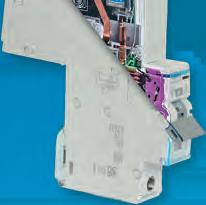
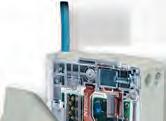


The award-winning AFDD with ProTools has the ability to identify 8 statuses with on-board diagnostics, saving you time and effort in fault finding.


alarm system should provide adequate warning to occupants.
Sections 2.23 to 2.33 inclusive provide guidance on the provision of automatic fire detection and fire alarm systems. This guidance is broadly similar to that given for England and Wales in Approved Document Bl, except that:
• Where any storey in a dwellinghouse is more than 200 m 2 in area:
• A dwellinghouse of not more than three storeys should be fitted with at least a Grade B Category LD2 fire detection and alarm system, as described in BS 5839-6: 2004 including a smoke detector or detectors in the principal habitable room and a heat detector or detectors in every kitchen.
• A dwellinghouse of not more than three storeys should be fitted with at least a Grade A Category LD2 automatic fire detection and fire alarm system as described in BS 5839-6 including a smoke detector or detectors in the principal habitable room and a heat detector or detectors in every kitchen (Paragraph 2.24). Notably, in Northern Ireland, basement storeys should be counted in this provision.
• As a minimum, at least one smoke alarm should be provided: • in the circulation route or routes on each storey; and • in the principal habitable room; and • at least one heat alarm should be provided in every kitchen (Paragraph 2.25).
• Significant detail is provided on the installation of smoke and heat alarms (Paragraphs 2.26 to 2.33 inclusive).
Housing (Scotland) Act 1987
up to The Housing (Scotland) Act 1987 (Tolerable Standard) (Extension of Criteria) Order 2019)
Scottish domestic technical handbook
2.11.1.A Grade D system should be installed in all dwellings, comprising:
• at least one smoke alarm installed in the principal habitable room
• at least one smoke alarm in every circulation space on each storey such as hallways and landings
• at least one smoke alarm in every access room serving an inner room
• at least one heat alarm installed in every kitchen.
The principal habitable room is the most frequently used room by the occupants of a dwelling for general daytime living purposes.
Where a dwelling has an open plan layout, the open plan area will also be used as a circulation space (which could include a stair and landing). The location and siting of smoke alarms and heat detectors should follow both the guidance above and in Clause 2.11.7 to determine the appropriate number of alarms.
Inner rooms - where occupants' only escape route is through another room (the access room) they are at risk if a fire starts in the access room. Therefore, every access room should be provided with a smoke alarm to give occupants of the inner room early warning.
Where the access room is a kitchen, the type of detector should be carefully considered to reduce the likelihood of false alarms.
Any inner room at a height of more than 4.5m should be designed in accordance with the guidance to Clause 2.9.7.
Common systems - in a building containing flats or maisonettes, a common fire alarm and detection system that interlinks all dwellings and common spaces is not recommended due to the risk of unwanted false alarms. However in a sheltered housing complex, monitoring equipment is recommended due to the vulnerability of the occupants.
A sheltered housing complex normally provides accommodation for vulnerable occupants with a diverse range of support needs. Therefore, a fire alarm signal should be transmitted to a remote monitoring service or to a warden who can assist with any evacuation if necessary, or call for assistance.
In order to achieve this principle, a Grade C system should be installed in every dwelling in a sheltered housing complex which comprises central control equipment in accordance with BS 5839: Part 6: 2019, and:
• one or more mains-powered smoke alarms and one or more mains-powered heat alarms with an integral standby supply;or
• point fire detectors and separate sounders.
Interconnection - all smoke alarms and heat alarms in a dwelling should be interconnected so that detection of a fire in any alarm, operates the alarm signal in all of them. Smoke alarms and heat alarms should be interconnected in accordance with BS 5839: Part 6: 2019.
Radio linked interconnection between hard wired smoke alarms and/or heat alarms may be used for a Grade D system. More detailed guidance on the use ofradio linked technology can be obtained from BS 5839: Part 6: 2019.
In dwellings, and other buildings, an automatic fire detection and fire alarm system can significantly increase the level of safety by automatically giving an early warning of fire.
Building Regulations in England, Wales, Northern Ireland and Scotland all require provision(s) of early warning of fire in dwellings. However, the requirements for such differ dependent on the nature of the premises. Furthermore, there are also differences in the required minimum standards and the guidance on how to achieve such in the devolved nations. This article summarises these requirements and the associated guidance.
The most up to date guidance issued by the Devolved Governments may be found at the following websites: England: www.gov.uk/guidance/buildingregulations-and-approved-documentsindex
Wales: Building regulations/ Sub-topic/ GOV. WALES
Northern Ireland: Building Regulations Technical Booklets/ Department of Finance (finance-ni.gov. uk)
Scotland: Building regulations - Building standards - gov.scot (www.gov.scot)

Objective:This article looks at the new Chapter 82 of BS7671 to provide greater understanding when working with embedded renewable sources, either used in conjunction with the existing supply for an installation or as an alternative and independent source of electrical energy forming a prosumer's low voltage electrical installation (PEI)
Many consumers have been moving towards energy saving measures over the past few years, and never more so than recently with the increasing costs in energy and the significantly reduced returns provided from feeding back into the grid.
The increase in popularity of electric vehicles in line with government targets for the reduction in the burning of fossil fuels for energy generation, and delays in the construction of nuclear power facilities has meant that measures need to be taken to support the increasing energy demands and mitigate stress on the public distribution network.
BS 7671 has seen the introduction of a new Chapter 82 in AMD2; Prosumer's low voltage electrical installations (PE Is), which contains additional requirements, recommendations and guidance for the design, erection and verification of many types oflow voltage electrical installations included within the scope of BS 7671, and not least, for those installations having local production and storage of electrical energy (see Fig 1).
The intention of Chapter 82 is to ensure that the adopted means of renewable energy source(s) available and operating in a PEI, either in isolation from, or when connected in parallel with, the public supply and used for the dynamic support of power demand to the
public distribution network should be made reliable, be able to operate safely, and provide sustainable and efficient use of energy when integrated into the smart grid system.
Additionally, the PEI infrastructure should be compatible with existing and future ways to deliver electrical energy to current-using equipment within the installation and/or to the public distribution network (821).
It is recognised that both the generation of electrical energy from renewable sources such as solar PV and/or wind turbines, and that energy consumption
Fig 1 Prosumer's low voltage electrical installation (PEI)
patterns within an installation are intermittent. For this reason, where it is expected that a prosumer's installation is to be available in 'Island mode' and isolated from the grid, or where it is necessary to maximise self-consumption during periods ofreduced generation and high current demand, Regulation 822.1 recommends that a means to store energy is provided within a PEI.
Previous articles in Connections issues 216 and 217 looked at the different types, configurations, and the advantages of using an electrical energy storage system (EESS).
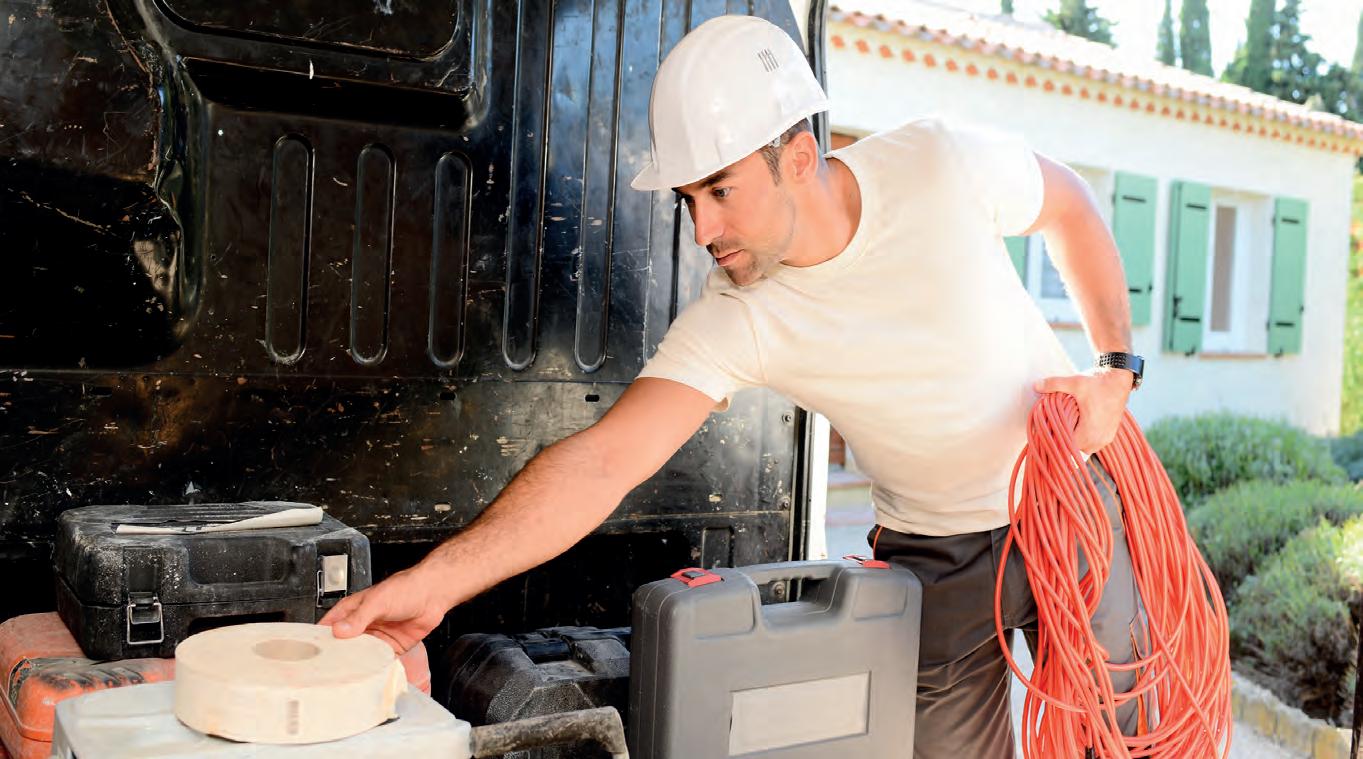
A PEI is a low voltage electrical installation that can both consume and produce electrical energy, and that may or may not be connected to a public distribution network. A PEI is typically formed by a combination of electrical equipment available within an installation that provides specific functions including:
I. Supply - Connection to the public distribution network, or local generation including solar PV, wind turbines and in some instances, electrical energy storage systems (EESS).
II. Distribution system - Depending on the type of PEI, configuration of distribution boards, distribution and final circuits may vary. The delivery method could be through the public distribution system (if agreed with the DNO) or within the separate PEI distribution system.
III. Consumption - Current-using equipment used within the installation (notably, a battery) should be considered as both a supply and a load.
IV. Energy management - System monitoring within the installation, allowing switching between available supplies and control of connected loads in the form ofload shedding.

The integrated electrical energy management system (EEMS) of the PEI is able to switch between the readily available sources of supply. Regulation 824.2 highlights the operational modes that may be adopted and implemented for a particular type of PEI, including:
• Connected mode - operation relies on a connection to the public supply network to enable:
• direct feeding mode - the public distribution network supplies the PEI to consume energy (see Annex B82.1.1, B82.2.1, B82.3.1), and
• reverse feeding mode - the PEI supplies the public distribution network by means of the embedded generation and/or electrical energy storage system (see Annex B82.1.3, B82.2.3, B82.3.3).
• Island mode - the PEI is disconnected and isolated from the public distribution system but remains energized through the solar PV and EESS (if any) (see Annex B82.1.2, B82.2.2, B82.3.2 and Fig 2).
The basis for operation of the PEI is by
means of a dynamic relationship between the smart grid and a PEI, controlled and monitored by an electrical energy management system (EEMS).
The EEMS is an intelligent device capable of handling many functions (825.1) and may comprise a separate unit or be integrated in other equipment within the PEI. The EEMS can exchange and receive live data with the Distribution System Operator (DSO) in order to interact with the dynamic needs for power demand of the distribution network and current demand within the installation.
In response, the EEMS can adapt the PEI accordingly by means of balancing local consumption, often through load shedding, although other equipment may be required, and diverting electrical energy, depending upon local sources of supply available and their readiness to supply either the installation or support the distribution network.
•
Localpower supplies
• Currentusingequipment,or
• Localstorageunits,or
• Thepublicnetwork"
*Exceptin 'islandmode'
Localstorageunits. canbe charged
• Fromalocalsource,or
• Fromthepublicsupply
•
Localstorageunits
• Currentusingequipment
SeeAnnex882forexamples ofoperatingmodes.
The EEMS is typically configured during the initial set-up and combines information relating to the local energy sources attached to the PEI, as agreed within the contractual agreement between the DSO and user. For example, some installations may have a solar PV system combined with a static EESS, while other systems may have the further option for connection of an electric vehicle (EV) operating either as a load or mobile EESS.
Appendix 17 of BS 7671 provides additional recommendations for the design and erection of electrical installations having local production and energy storage to optimise the overall efficient use of electricity (821).
The means for optimisation and the application of an energy efficiency measure such as load shedding is typically incorporated as a function within the EEMS controlling the PEI. However, in all cases, the design of the PEI and functions of the EEMS must take account of the needs of the user as a central role to the function of the PEI and prioritise such needs over those of the DSO for dynamic support of the grid.



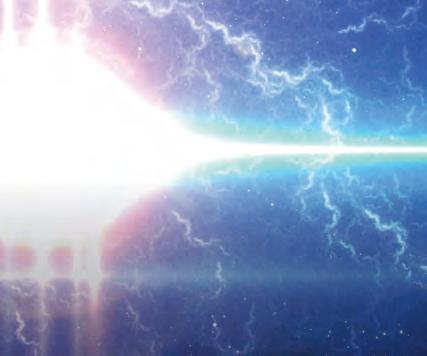







Paragraph 17.2 (iv) of Appendix 17 states that provision for a manual override facility enabling the user to take control from such automatic functions should be considered during the system design. This may take the form of a dedicated user interface.
The design must also ensure that the system design does not reduce the availability of an electrical supply or service/operation of the installation below the desired level of the user.
A typical example may include the need to recharge an EV at the property after a long journey. However, at the time, the installation is found to be operating in island mode at the request of the DSO during a period of high demand on the network. To enable EV charging, the EEMS would be required to switch the installation back to connected mode, either automatically, or manually at the request of the user.
It is recognised that a PEI can switch between the intended operational modes at any time (824.2). Although, the form of embedded generation must be automatically synchronised in terms of frequency, phase, and voltage magnitude with the public distribution network before reconnecting back to the grid, and provided that the requirements of Section 551 are met.
The operating modes as described earlier in the article may be adopted for specific types of PEI characterised as:
• Individual - one electrical installation with the ability to both consume and supply electrical energy (see Fig 3).
• Collective - a group ofprosumers relying on a communal source of energy generation which is managed for the group (see Fig 4).
• Shared - multiple prosumers coordinating their individual supplies to form a common source of shared energy (see Fig 5).
More detail identifying the different types of PEI and their specific configurations may be provided in future Connections articles.
This article has introduced the concept of a prosumer's low voltage electrical installation and has provided information for the different types of operational modes within a PEI. Also considered was the electrical energy management system (EEMS), as a
fundamental component for the means of monitoring and control ofa PEI. The focus of maintaining the user as central to the operation of the PEI and the requirements for safety within an installation depending upon the type of operational mode selected within the PEI were discussed.
Objective:This is the third and final article in the series, looking at the AC side of a solar PV installation, and in particular the requirements of both Sections 551 and 712 of BS7671. Some consideration will also be given to electrical energy storage systems (EESS) in conjunction with a solar PV system, to form a low voltage prosumer's installation
The general requirements of Section 551 apply to low voltage generating sets including, but not limited to, photovoltaic cells and batteries (551.1.1).Such forms of generation may be combined and used to provide an embedded renewable source of energy within an installation, while operating independently and/or in parallel with other sources, typically the public supply network. This type of arrangement, in which the employed embedded generation and energy storage system is able to both produce and consume electrical energy, is described in the new Chapter 82 of BS 7671 as a 'Prosumer's low-voltage electrical installation' (PEI).
Future issues of Connections will consider the operational characteristics and types of PEI in more detail.
Where multiple supplies are available within an installation, several characteristics must be determined for each energy source (132.2), for example, the prospective short-circuit current and prospective earth fault current (551.2.2).
Any chosen generating set falling within the scope of Section 551 should be installed such that:
• It does not impair the safety or proper functioning of other sources of supply (551.2.1);and
• Any RCDs installed within the installation, in accordance with Chapter 41, remain effective for every intended combination of sources of supply (551.4.2).
In a domestic installation, connection
of the PV supply cable from the inverter is typically via a dedicated 'way' in a consumer unit, or from an additional consumer unit provided specifically for the PV system and for those essential circuits requiring a back-up supply from the means of embedded generation.
The current rating of the overcurrent protective device for the supply cable to the inverter should be determined by taking account of the design current for the equipment. This may be either the AC maximum current provided by the inverter manufacturer, if available; or alternatively may be taken as 1.1times the AC current rating of the inverter (712.433.104).
Additionally, where a generating set is used in parallel with the public distribution supply system as a source of energy, the requirements given in Regulation Group 551.7 shall be met.
It is recognised that some generatorsets may be connected on either the supply side or the load side of all overcurrent protective devices for final circuits of the installation (551.7.2).However, on the AC side of a solar PV installation, the PV supply cable shall be connected to the supply side of the overcurrent protective device providing automatic disconnection of supply (ADS) for circuits supplying current-using equipment (712.551.7.2).
Additionally, where such PV equipment is installed, isolation shall be provided for both the AC and DC sides of the inverter (712.537.2).
It must be borne in mind that when selecting distribution boards and the like for such installations, it is important to differentiate between the rating of the main switch and the rating of the assembly, to ensure that the assembly is not
overloaded when taking multiple sources of supply.
Where a generating set is connected via a low voltage switchgear and controlgear assembly, such as a distribution board, it shall be selected such that: InA;;,, In+ Ig(s)
Where:
InA - is the rated current of the assembly, In - is the rated current or current setting of the incoming circuit overcurrent protective device either incorporated within the low voltage switchgear and controlgear assembly or upstream of it, and Igc,J - is the rated output current of the generating set(s) (see Fig 1).
Furthermore, where such PV and battery storage systems are employed to provide an alternative source of supply, the installation design must ensure adequate availability of capacity to meet the expected energy demand for the connected load(s).
There are several different software tools and procedures available for estimating the performance expected from a grid-connected PV system. However, systems installed under the Microgeneration Certification Scheme (MCS) may need to use specific calculations and alternative methods for estimating system performance.
Where the protective measure of automatic disconnection of supply (ADS) is used, it shall be provided for installations in respect of each source, or combination of sources of supply in use, and shall operate independently of other sources or combinations of sources (Section 411),
except where modified by the requirements stated in Regulation Group 551.4.
In addition, where fault protection is to be achieved in different ways within the same or part of an installation in relation to the adopted source of supply, the effectiveness of the fault protection provision shall not be compromised or influenced by any such changing conditions within the installation (551.4.1).
For example, where a PV system combined with an EESS generating more than 16 A per phase is required to operate in isolation from the grid (island mode) as a switched alternative source to that of the TN public supply system, protection by ADS shall not rely upon the distributor's means of earthing (551.4.3.2.1).
The recommendations ofG99 Requirements for the connection of generation equipment in parallel with public distribution networks published by the Energy Networks Association require a suitable earth electrode system independent from the earthing arrangement for the installation to be provided. In addition, the electrode shall be ofa type listed in regulation 542.2.2. However, any connection derived from the means of earthing from the public supply system need not be disconnected during island mode operation (826.1.1.2.1).
Fault protection is generally provided for those essential circuits or parts of the installation supplied by the static inverter while relying on the automatic closure of the grid bypass switch (to be considered in a future article). However, under such conditions, protection against thermal effects in accordance with Chapter 42, and protection against overcurrent meeting the requirements of Chapter 43, shall remain effective in all situations (551.7.1).
Where fault protection and operation of protective devices may not be within the time required by Section 411, Regulation 551.4.3.3.1 requires supplementary equipotential bonding to be provided between simultaneously accessible exposed-conductive-parts and extraneous-conductive-parts on the load side of the static inverter (415.2).
Furthermore, the operation of protective devices shall not be impaired by DC currents generated by the static inverter or any associated filters (551.4.3.3.2).
Additional protection from an RCD meeting the requirements ofRegulation
Fig 1 Example In cutout for rating of a distribution board having more than one source of supply
415.1.1may be required where the supply cable to the inverter is installed in the fabric of the building at a depth ofless than 50 mm from the surface. The requirements of both 522.6.202 and 522.6.203 should also be considered where appropriate.
An RCD that is installed for additional protection, should disconnect all live conductors including the neutral conductor (551.7.1(ii)).
Where the PV inverter does not have simple separation provided between both the AC and DC sides of the transformer, or where simple separation is not provided between the inverter and RCD, the RCD used to provide fault or additional protection must be suitable for operation in the presence of a DC component in the residual current. This will rule out the use of Type AC and Type A RCDs.
The RCD provided for protection of the PV AC supply circuit must be of Type B to BS EN 62423 or BS EN 60947-2 (712.531.3.5.12). However, where the manufacturer's instructions for a particular inverter state that a Type B device is not required, or where galvanic isolation is provided by a transformer separating both the AC and DC sides, this requirement need not be applied.
Where protection against transient overvoltage meeting the requirements of Section 443 is required for the installation, Regulation 712.443.101 also requires
Overcurrentprotective devicerating In1
Overcurrentprotective devicerating ln2
provision of overvoltage protection for the DC side of the PVinstallation.
Typically, Type 2 SPDs shall be used. However, where protection against effects from direct lightning strikes is specified and the requirements for a minimum separation distance between a lightning protection system (LPS) and a solar PV installation in accordance with BS EN 62305-3 is not achieved, a Type 1 SPD shall be used in conjunction with Type 2 devices (712.534.101 and 712.534.102.1).
For both the AC and DC sides of the PV installation the copper conductors connecting the SPD to the main earthing terminal (MET) shall have a minimum cross-sectional area of 6 mm 2 for Type 2 SPDs and 16 mm 2 for Type 1 SPDs. Additionally, where such types of devices are used and contained within separate switch board assemblies, the separation distance between assemblies should be kept as small as possible (712.534.105).
This article considers some of the fundamental changes introduced in AMD 2 in respect of requirements for the AC side of a solar PV system.
Where different sources of supply are available within an installation, it is important to ensure that the method of protection adopted remains effective for every intended combination of sources of supply and is not liable to impair the safety of proper functioning of the other sources.
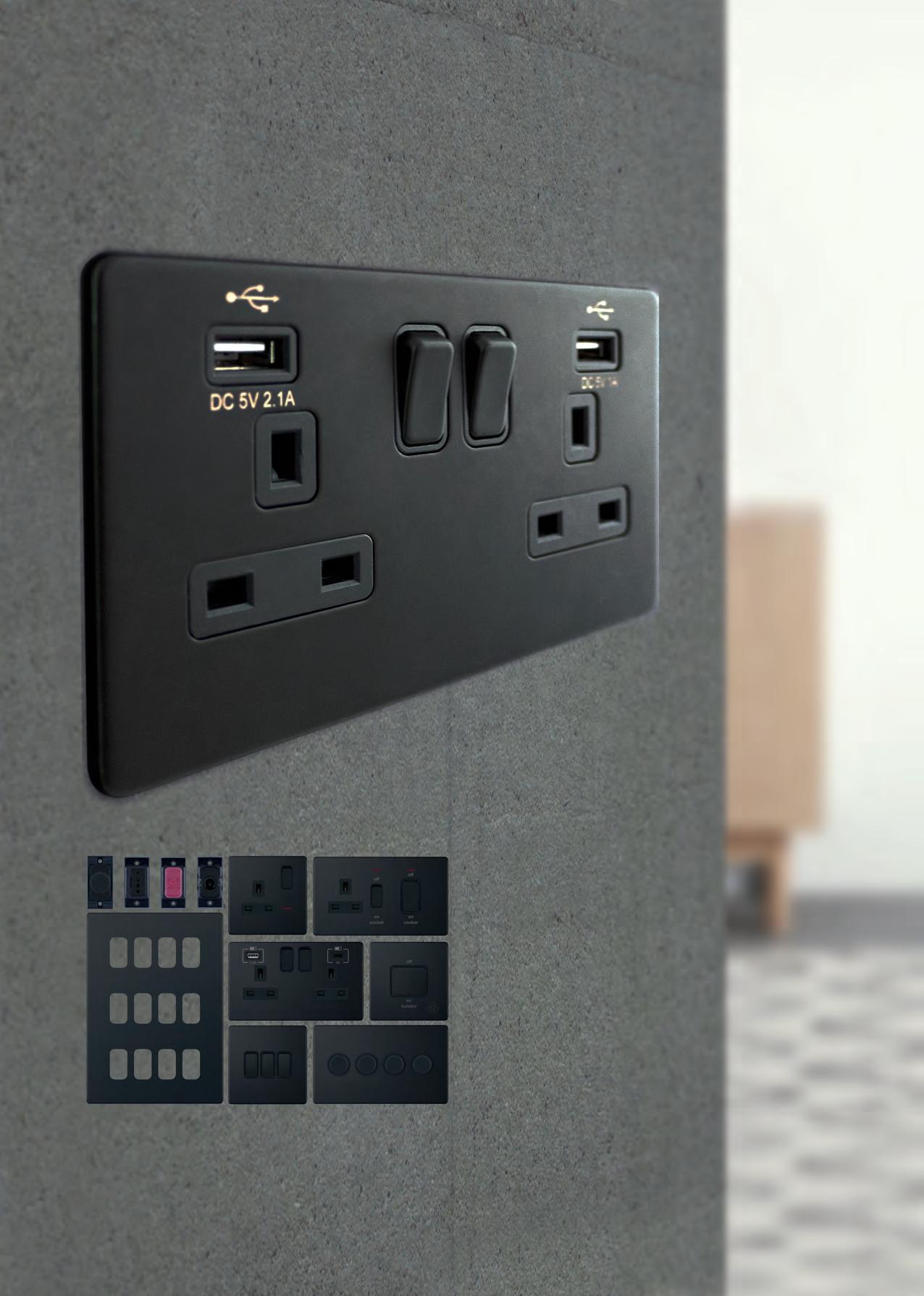

In the following questions you should choose which of the four options is, in your opinion, the correct answer. You may find it useful to refer to the technical articles in this issue of Connections and BS 7671:2018+A2:2022.
The answers to the questions, accompanied by a briefrationale, can be found at the end of the Technical Section.
1. Where the maximum AC current of an inverter is not known, its design current may be determined by multiplying the inverter's rated AC current by a. 0.8 b. 0.9
C. 1.1 d. 1.2
2. When selecting a distribution board where a generating set is connected as an additional source of supply, the rated current of the distribution board (I0 iJmust comply with which of the following conditions?
a. InA;,,In+ Ig(s)
b. InA,s; In+ Ig(s)
C. InA;,,In - Ig(s)
d. InA,s; In - Ig(s)
3. Recommendations for the minimum separation distance between any installed lightning protection system (LPS) and cables forming part of a PV system are given in
a. BS EN 61439-3
b. BSEN62305-3
c. BS EN 62606
d. BS EN 62196-3
4. Which of the following sources of supply does NOT fall within the scope of Chapter 82 for prosumer's low voltage electrical installations? a. Local generator b. Photovoltaic system c. Battery storage d. Uninterruptible power supply
5. Which of the following is an operating mode for a prosumer's low voltage electrical installation? a. Individual b. Island c. Collective d. Shared
6. All smoke and heat alarms in a Grade Dor Grade F system in a dwelling should be a. Mains-powered b. Constructed of non-flammable materials c. Interlinked d. Installed on a ceiling
7. InBS5839-6thetermprincipal habitable room is defined as the room a. Used for preparing and cooking food b. In which a fire is most likely to start c. Most likely to contain sleeping occupants
d. That is normally the most frequently used for general daytime living purposes
8. For protection oflow voltage power systems, BS 7671 recognises the use of surge protective devices conforming to a. BSEN61643-11 b. BS EN 62305-2 c. BSENIEC60664-1 d. PD CLC/TS 61643-22
9. Which of the following is a voltage limiting device found in SPDs? a. Sparkgap b. Gas discharge tube c. Breakover diode d. Metal oxide varistor
BS7671 orotherreference
1. c. A factor ofl.1 multiplied by the current rating of the inverter may be 712.433.104 used to determine the overcurrent protective device.
2. a. Where a generating set is connected via a low voltage switchgear and 551.7.2 controlgear assembly, such as a distribution board, it shall be selected such that: InA 2: In+ Jg(s)
3. b. BS EN 62305-3- Protection against lightning Part 3: Physical 712.534.101 damage to structures and life hazard provides guidance for the minimum separation distance between a lightning protection system (LPS) and other electrically conductive elements within an installation.
4. d. Connection to the public power supply, local generation, photovoltaic 823 systems, wind turbines and batteries are recognised as supplies. An uninterruptible power supply is not because it is not capable of reverse feeding the public network and/or current-using equipment ofan installation upstream ofits point of installation.
5. b. A PEI may be operated in island, direct feeding or reverse feeding 824.2 mode. Therefore, the only one of these given as an option is island mode. The other three options relate to the type of PEI.
6. c. Clause 13.2 indent c) of BS 5839-6 states that 'In all premises, all BS5839-6 smoke alarms and heat alarms (if provided) in Grade D and Grade F Clause13.2c) systems should be interlinked, such that, when fire is detected by any smoke alarm or heat alarm, an audible fire alarm warning is given by all smoke alarms and heat alarms (if provided) in the premises.'
7. d. Principal habitable room is defined in BS 5839-6 as the: habitable BS5839-6 room that is normally the most frequently used room for general daytime living purposes.
8. a. SPDs shall comply with the requirements of BS EN 61643-11 - Surge 534.4.4.1 protective devices connected to low-voltage power systems. Requirements and test methods.
9. d. A metal oxide varistor is a device commonly used in voltage BSEN61643-11 limiting SPDs. The other three options are examples of voltage Clause3.1.5 switching devices.
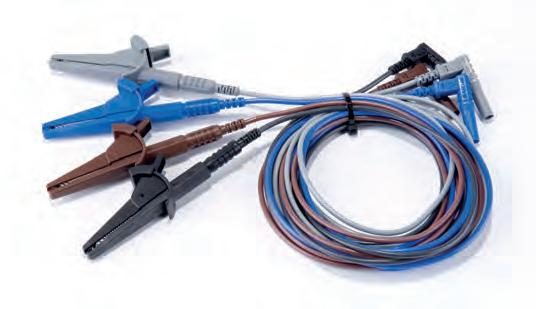
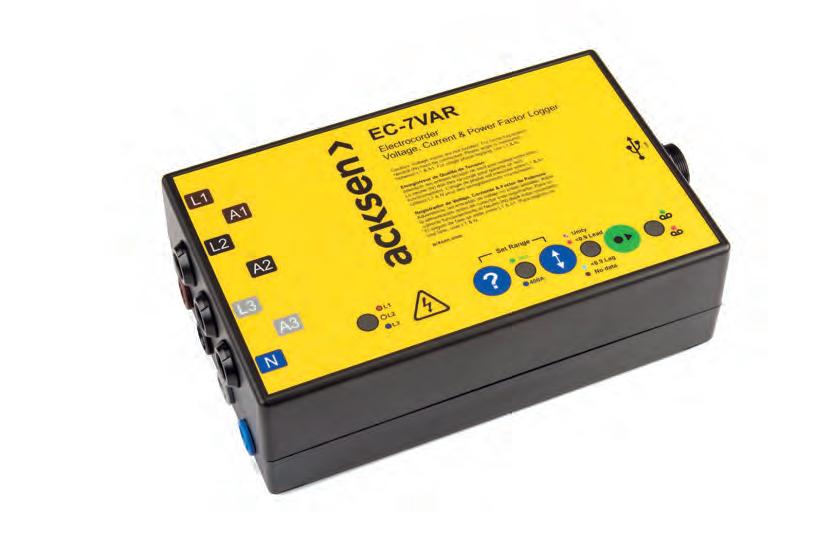
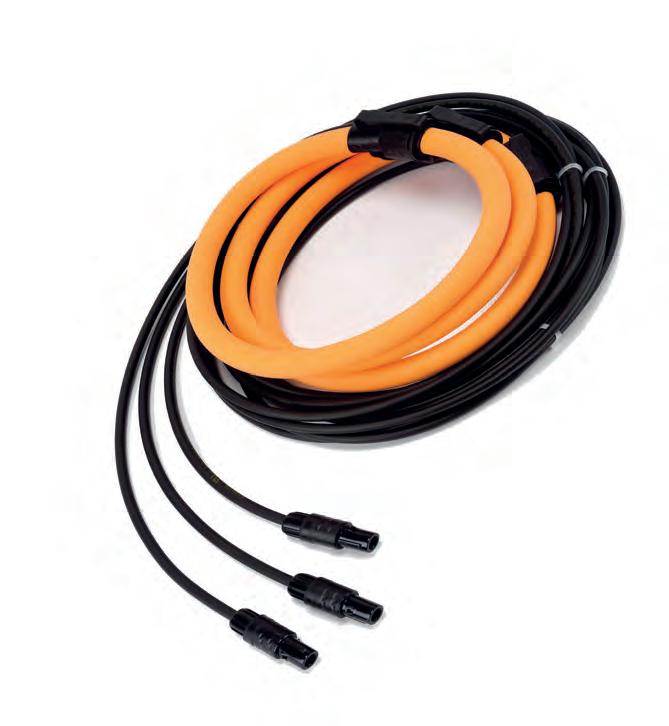
Couldwe besittingbackandrelaxingana zeroemissionflight samedaysoon?Israelicompany Eviatianhopesso.Its zero-emissionaircraft,Alice, hasjust takenits maidenvoyage,flyingfar eight minutesat 3,5000ftfromGrantCountyInternational Airport[MWHJ in Washingtonstate.
All-electricAliceis poweredbytwo magni650 electricpropulsionunitsfrommagniX,ratedat 700kWeach.Its flightswill be150ta 850miles.It canbeconfiguredasa nine-seaterexecutivejet, with mareseatsfar commuters,or as a windowless cargocarrier.OHLExpresshasli! Alicesanorder. What'smare,becausethey'reso Quiet,electric planeswill beableta useairportsthat havenoise restrictionsandlimitedoperatinghours.


Damsprovideirrigation,watersupply andfloodcontrolbut imagineif they couldbefitted with turbines.It works likethis: waterfallingthroughthe dam spinsturbinebladesconnectedta a generator.Vaila,electricity!
Nearly40usdamsnowsportturbines,whichcreatemare than500megawattsof renewablegenerationcapacity.Andwhen Brazil'sBelaMantehydroelectricdamanthe XinguRiveris fully functioning,it shouldgenerateenoughelectricityfar 60million people,that's10%of the country'stotal electricitydemand.
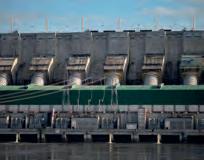
Researchers at BaylorUniversityinTexassayretrofittingdams andupgradingexistinghydroelectricplantscouldboasttheirmaximum outputbyanextra78gigawatts,accordingta Wired.That'smarethan doubletheaverageelectricitydemandinthewhaleoftheUK.
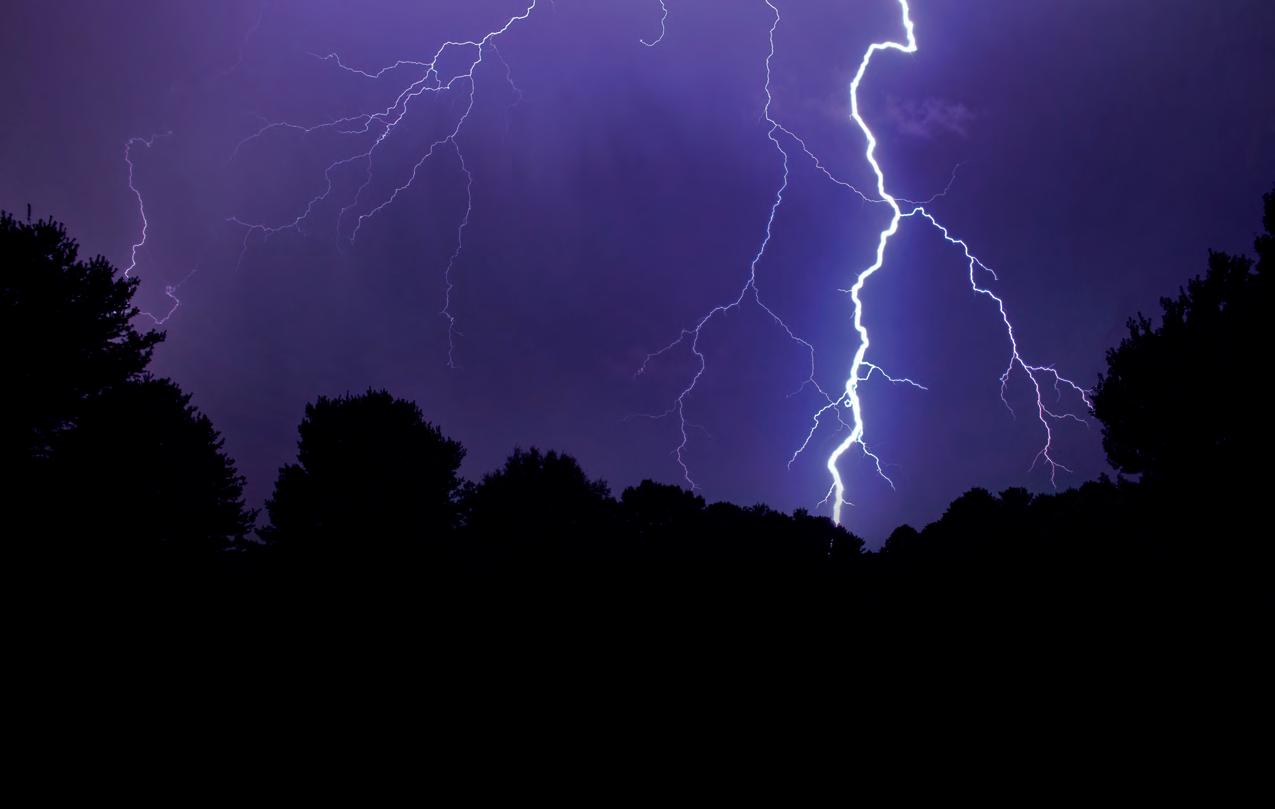
In a swarm, bees can produce a greater electric charge per metre than a thunderstorm, according to New Scientist. Weather researchers at the University of Bristol saw their electric-field monitors record a jump in atmospheric electric charge, even though there was no storm. In fact, it was caused by a swarm of western honeybees on the hunt for a new home. The team worked out that swarming bees create an electric charge ranging from 100 V to 1,000 V per metre -the denser the swarm, the stronger the electric field. If only it could be harnessed ...
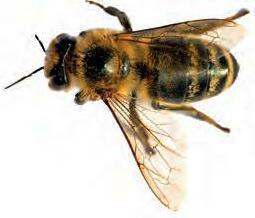



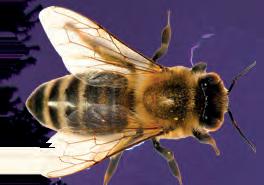

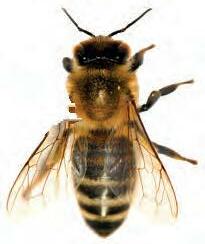
Aico's free, award-winning Expert Installer training scheme is FIA CPD accredited and is designed to make sure installers have all the information they need to correctly install domestic home life safety systems, including Fire and Carbon Monoxide alarms and Environmental Sensors.
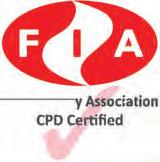


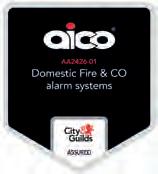
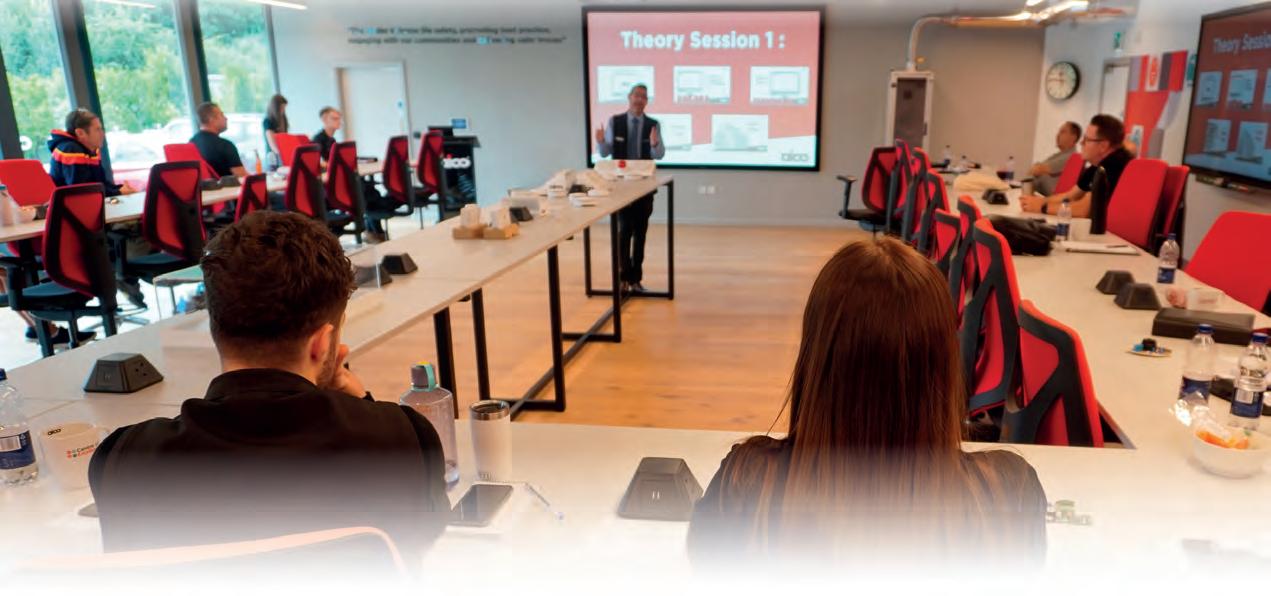
Once you become an Expert Installer, you will be invited to join the Aico Installer Community -a connected online platform built to support Expert Installers

Members of the community are eligible to participate in Aico's free-of-charge City & Guilds Assured QualificationDomestic Fire & CO Alarm Systems.
Visit our website to sign-up.
